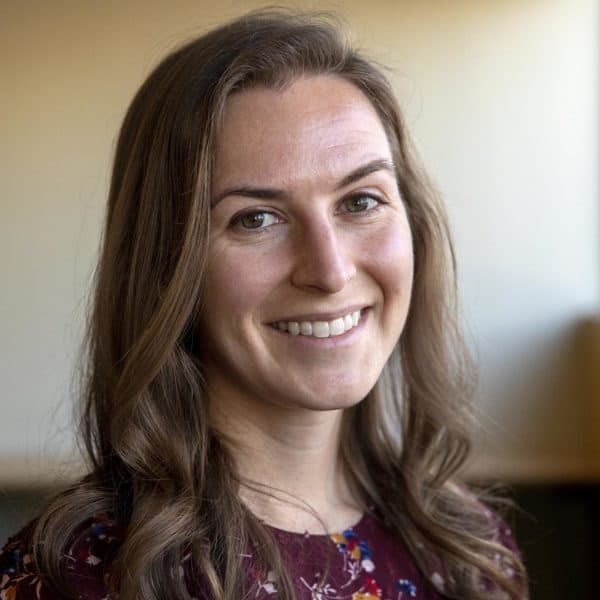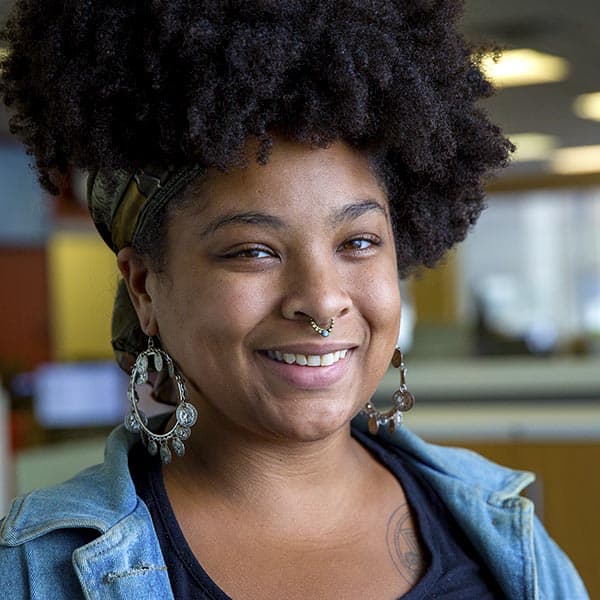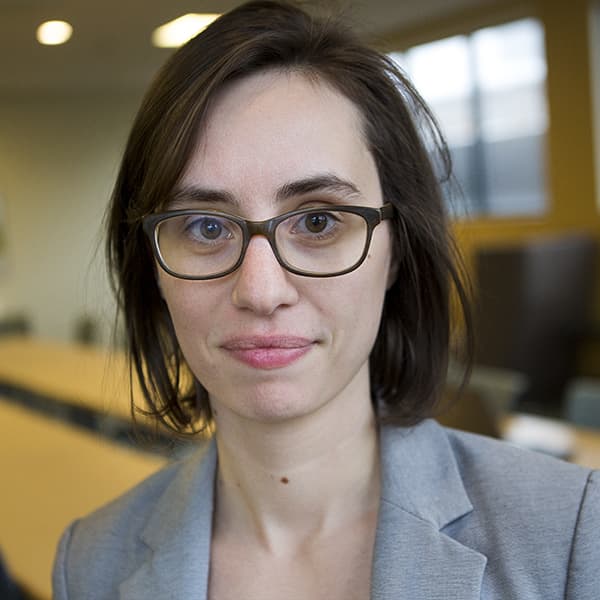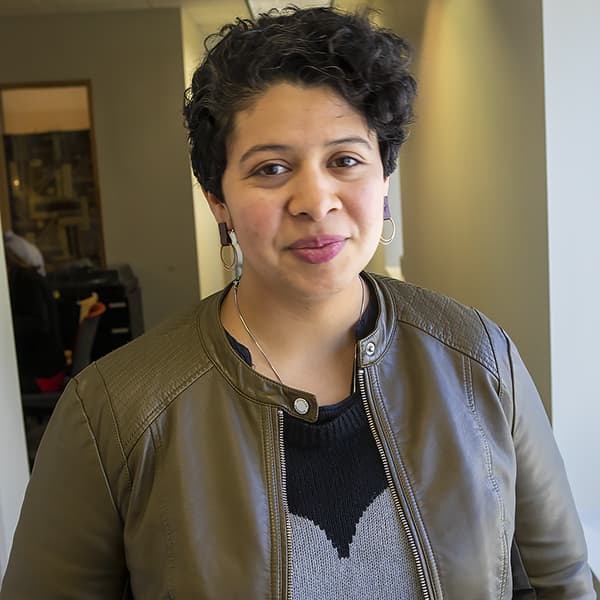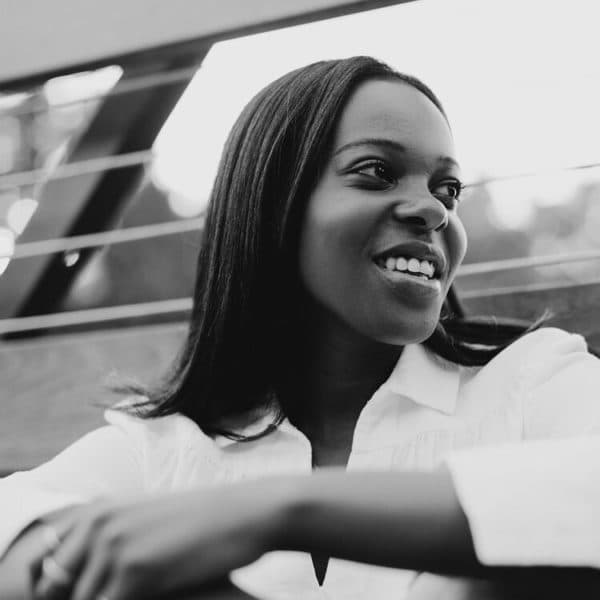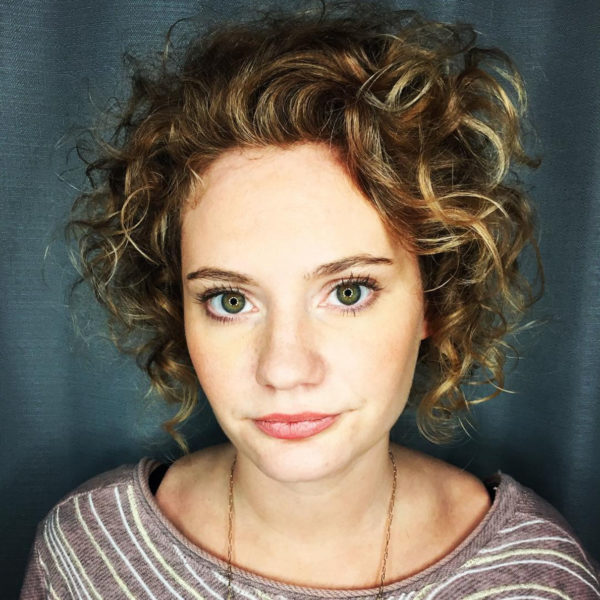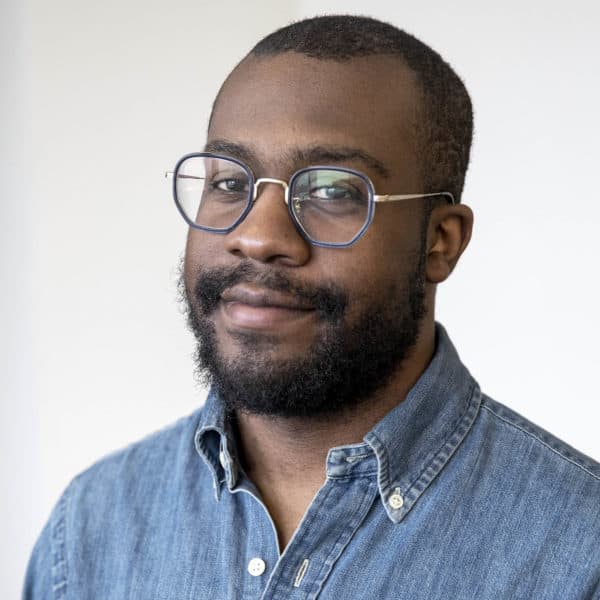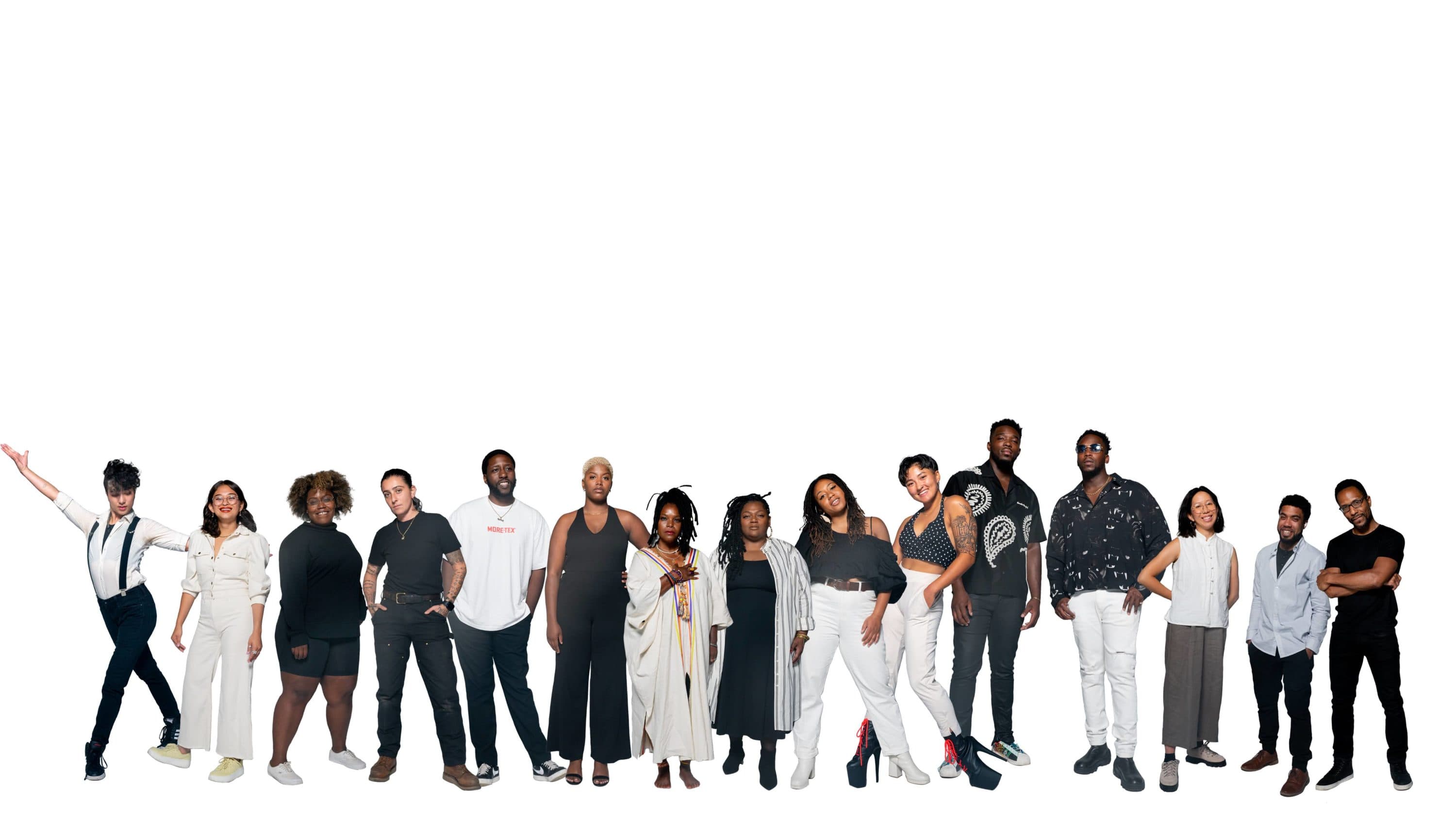
WBUR Presents: The Makers
Motorcycles. Photographs. Wooden frames. Film. Music. Storytelling. Art comes in many forms. Around Greater Boston, there are artists who create such stunning work that they push their respective mediums forward.
For the third time, WBUR is excited to present The Makers: 15 artists of color leaving an imprint on Massachusetts. This year, we asked you who we should highlight. The Makers were selected from over 140 nominations submitted from our audience, Instagram and Twitter followers, newsletter subscribers and beyond. We deliberated for months to whittle the list down. With the help of an advisory panel comprised of members from last year’s cohort of artists — Amanda Shea, Yara Liceaga-Rojas, Kadahj Bennett and Pascale Florestal — we selected the artists who have reached a point in their practice where they’re not only making waves, they’re elevating all of those around them.
These individuals allowed us into their studios and creative spaces — from a wood-working shop in Roxbury to a paint-spattered studio in Lynn to a vibrant park in Chinatown — sharing an intimate look into the way they create their work and their sources of inspiration.
Visual artist Daniel Callahan, one of The Makers, sums it up well. “That is the power of art, that it's like an alchemy. You can take even your struggles and you can convert it into something beautiful that other people can experience and be fulfilled by.”
Below, you’ll find photos, digital profiles and audio stories for each of The Makers. We hope you’re as inspired by these individuals as we are.
—Dianna Bell, Acting Assistant Managing Editor for Arts & Culture
Presenting The Makers:
Anita Morson-Matra | Christa Brown | Daniel Callahan | Harley Takagi Kaner | Iaritza Menjivar | J. Shia | Lilly Rose Valore | Lily Xie | Michael Aghahowa | Nygel Jones | Olivia Moon | Shanelle Chloe Villegas | SuperSmashBroz | Victoria Lynn Awkward | Yvette Modestin
Anita Morson-Matra
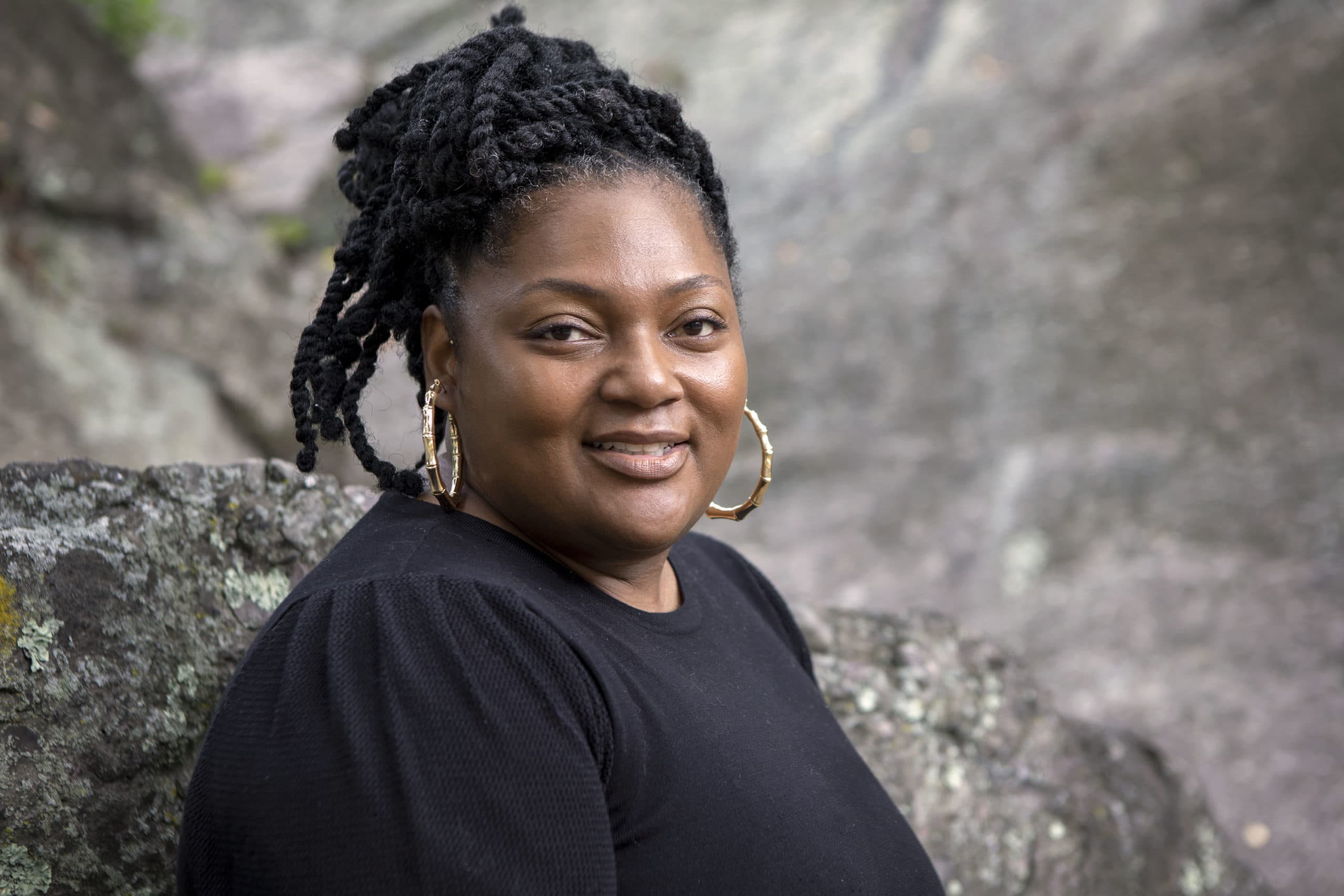
Anita Morson-Matra describes herself as many things: an urban planner, a social justice advocate, a first-generation American, an artist/creator. Her path was an unconventional one, beginning with a career in public health.
“[I] was inspired by the work around difference in quality of health by zip code and the connection to the built environment,” Morson-Matra recalls — that is, how a person’s health is affected by where they live. That interest led her to urban planning, which in turn led her to the unique position she finds herself in now: as a planner of public art installations and a convener of community.
Much of Morson-Matra’s work involves bringing people together in public spaces. In 2021, she curated Nubian Nights, a three-week-long multimedia installation in Roxbury’s Nubian Square that aimed to bring vibrance to a rapidly developing (and historically Black) neighborhood whose local businesses were laid low by the pandemic. More recently, she has been developing an events series to take place in Boston's parks, inspired by the 20th-century author and civil rights activist James Baldwin.
The project, called Baldwin in the Park, “will be a series of theatrical performances and opportunities for us to engage with Baldwin's work,” Morson-Matra says. This year, she received grants from the New England Foundation for the Arts and Olmsted Now to help fund the series. Both grants were designed to support projects around “spatial justice,” a field that looks at urban planning through a social justice lens.
Why Baldwin? Morson-Matra points to the writer's own search for refuge, which in 1948 led him to flee the racism of New York for the freer, more bohemian Paris.
“Having to leave where you are, you know, the place that you've loved, Harlem, and go to Europe, is something that has felt really close to me,” says Morson-Matra, who was recently priced out of her apartment in Roxbury.
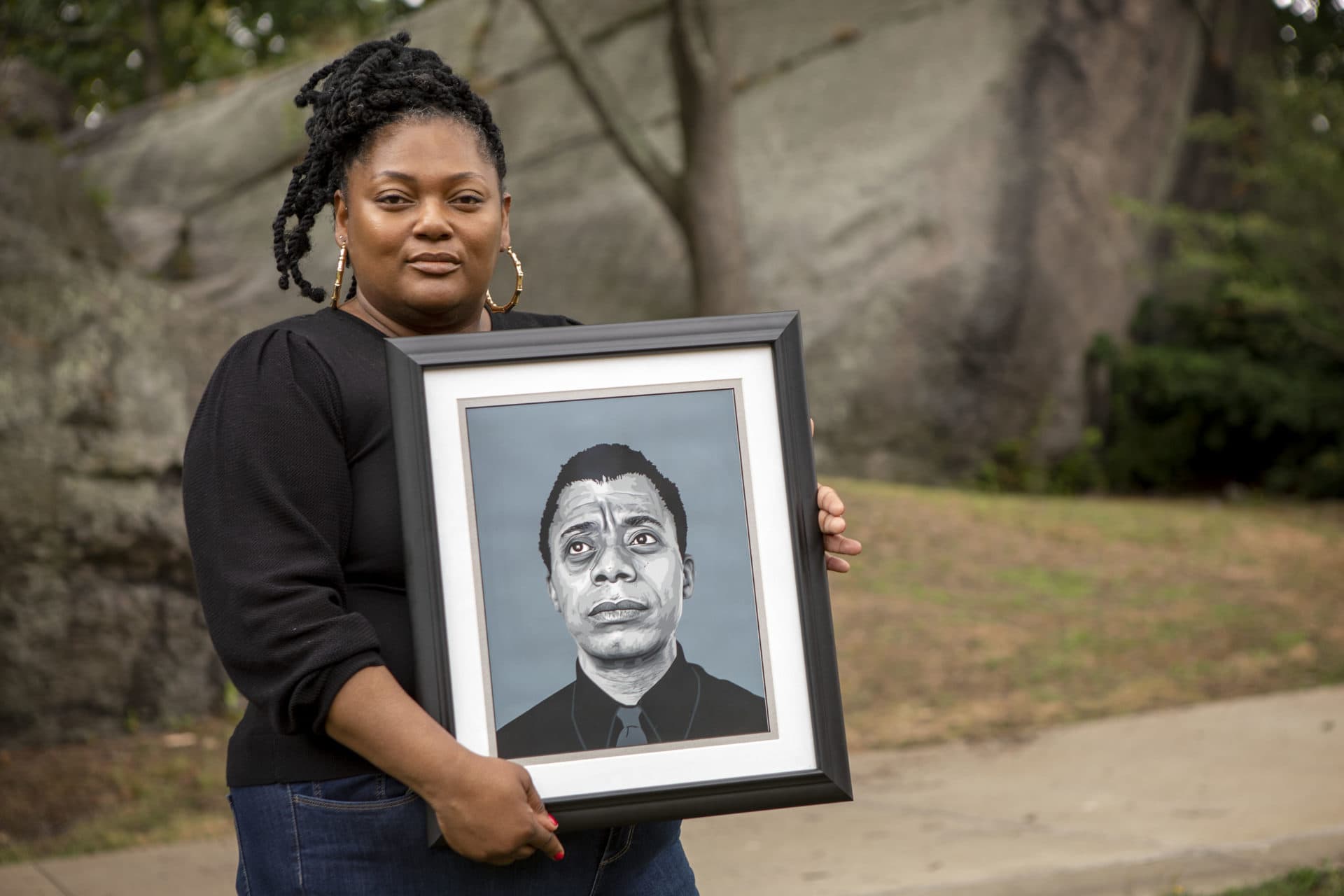
On a recent visit to the Rose Kennedy Greenway in downtown Boston, Morson-Matra gestures to the park’s immaculate lawn and lush shrubbery. “Even with all of the background sounds that you often find in major cities, it is a place of refuge and healing,” she says. But, she adds, not everyone feels that these public spaces are really for them.
“If someone was to come out on any general day, they would think that this may just be for tourists or this may just be for a certain population of people,” Morson-Matra says. “But it's not. It's for everyone.”
On Oct. 22, Morson-Matra will present a kind of preview of her “Baldwin in the Park” series on the Greenway, called “Baldwin in the Park: Collective Healing Through Movement & Meaning,” with the choreographer Jean Appolon. She says the interactive event will use dance and movement to help participants “connect with outdoor spaces wherever they find themselves.”
Morson-Matra plans to present the program at a significant spot on the Greenway: the site where a 17th-century woman named Zipporah Potter Atkins once owned a home. Potter Atkins is believed to be the first African-American to purchase property in the city — no small feat, especially considering that enslaved people were imported and sold in Massachusetts at the time.
“[It] is the perfect place to present and offer ‘Baldwin in the Park: Collective Healing Through Movement & Meaning,’ as a way not only to honor the legacy of challenging and painful histories that Black and brown people have had throughout the city of Boston, but also to find ways to utilize this space to heal,” Morson-Matra says. “To understand that we are welcome in all spaces and that we have an opportunity to convene and meet and dance and move and bring forth joy.”
Christa Brown
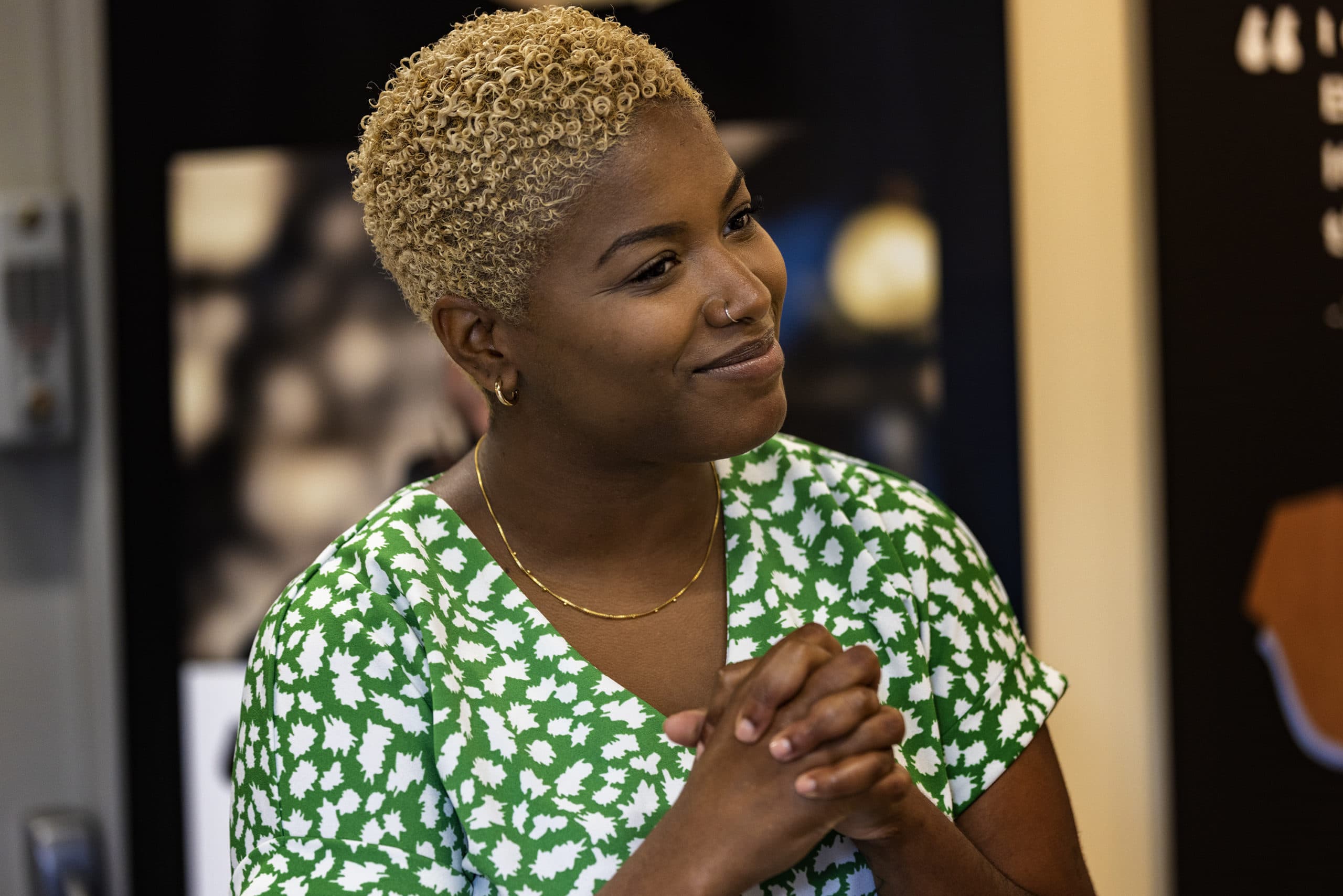
As the head of the Free Soil Arts Collective , the only Black-owned arts organization in the Merrimack Valley, Christa Brown partners with the community to uncover lost histories and make opportunities for actors and teaching artists. In 2021, they participated in their first Juneteenth celebration. Actors played the roles of historical Black figures speaking to walking tours around the city.
“We took folks to six different spots that are tied to Black history,” she recalls. “There are 34 spots on the Underground Railroad in Lowell that are not marked. There's no signage. You wouldn't know.”
They told the story of Lowell High School, the oldest desegregated public high school in the United States. They told the story of Birdie Malbory, the first Black person to run for city council who had rocks thrown at her office and set ablaze. People who changed the face of the city but remain unacknowledged.
“It is magical, but if you walk the streets, you have no idea,” she says. “So we were kind of thinking about how we can shed light on that using the arts.”
Her collective’s name has a lineage. It hails back to the Free Soil Party which wanted the end of slavery.
“Their motto was, ‘Free soil. Free labor. Free men.’ So we wanted to kind of adapt that to artmaking and say we want the artists that we work with to have that freedom,” she says. “Just as the soil is free, the air is free, the land is free… whatever stories you have to say, we're not going to filter you. We're not going to make you palatable for a white audience. You're free.”
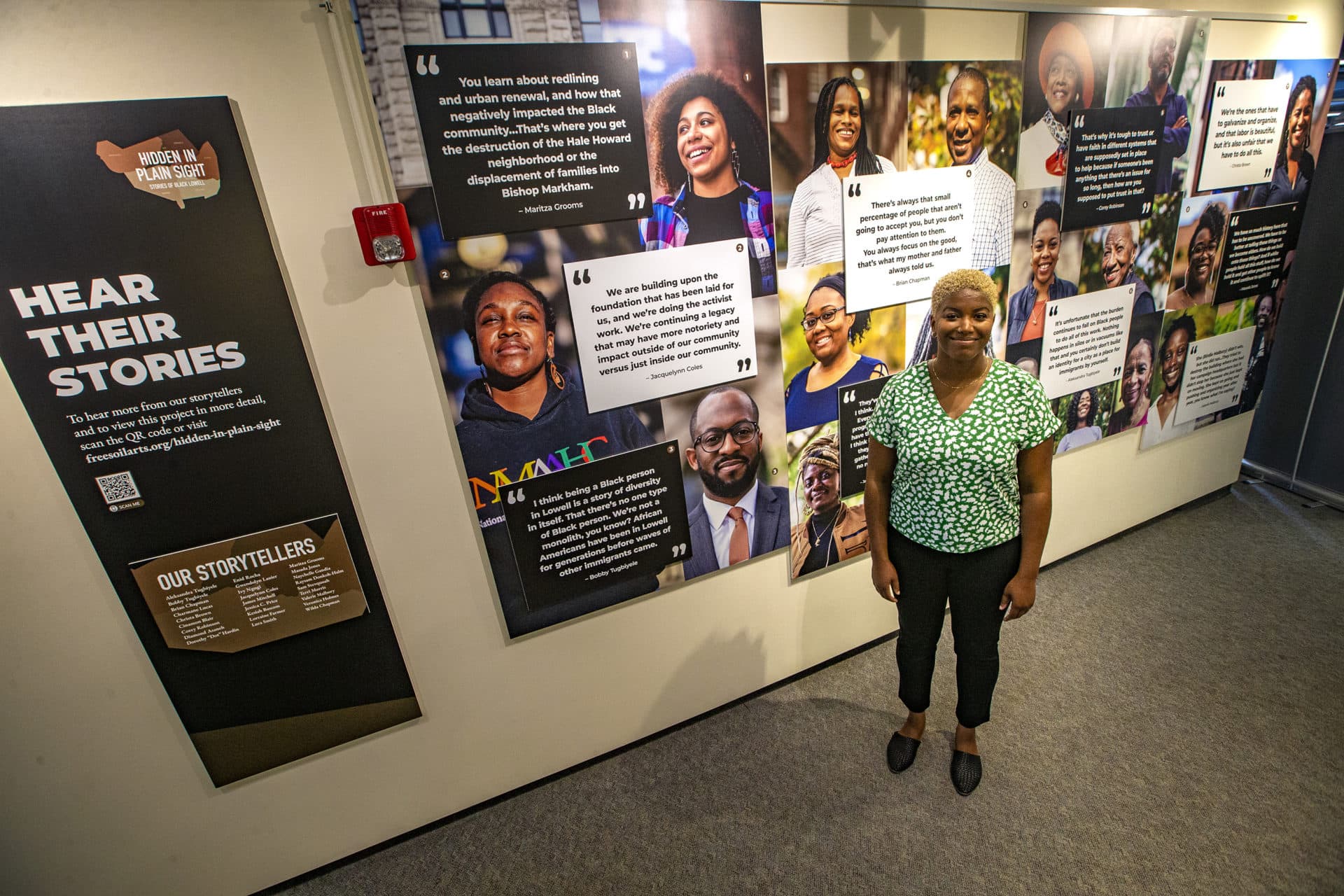
The 32-year-old said a lot of artists they’ve worked with have not been in an environment where that creativity has been fostered, where they’ve been allowed to take up that much space.
Their work can be seen around the city. Working alongside another local organization called The Kindred Project, Brown and her collaborator Masada Jones conducted 27 interviews with longtime Black residents. These oral histories became the cornerstone of an exhibit now on display at the Lowell National Historical Park Visitor Center. They’re also included in a book they published called “ Hidden in Plain Sight: Stories of Black Lowell .”
The organization was born of Brown’s desire to act in her community, to tell stories where she’s rooted and to use theater to seed a liberation she found as a child. She remembers during a period of homelessness as a child stumbling upon a traveling theater troupe.
“I was like, ‘What is this?’ I was sitting down and they wanted artists to come on stage. And I raised my hand,” she said. “I got up there, I had one line and I just felt like electric. What I would equate now to like falling in love or like having Cheesecake Factory for the first time...”
Of course, I asked her what that one line was.
“Shrimp,” she said, laughing. “Okay, okay. We were the guards of Hades and we needed a password and we were huddled and I was like, Can we say shrimp? Because it's my favorite food source? They were like, okay, sure. And the time came, we were like, shrimp. And I was in. I was hooked on a crustacean.”
Theater gave her a voice. Analyzing characters helped her analyze her own person. It changed her life. And she is now witnessing firsthand how it’s changing others.
Daniel Callahan
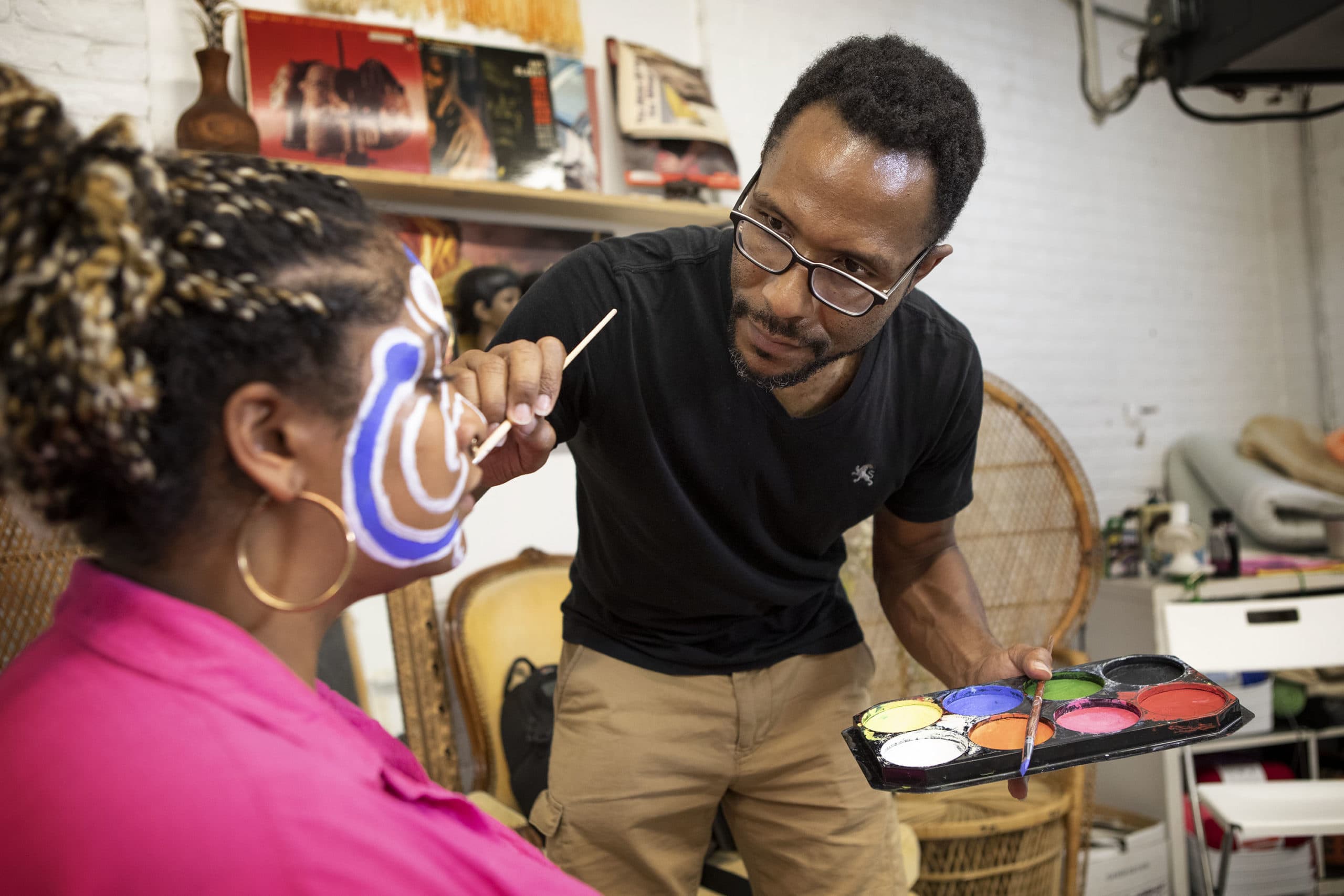
It’s hard to describe Boston artist Daniel Callahan ’s practice of “MassQing” without going through the process yourself. First, you sit down with Callahan, face to face. He pulls out a sketchbook and pencil and asks you a few questions.
The process seems simple enough. But the questions are deeply reflective. As you articulate your feelings out loud, Callahan listens and sketches away, generating the design that he’ll eventually paint on your face. Your story influences the design, though as Callahan notes, he is limited by eight or so hues in the primary color palette of the children’s face paint he uses.
“It’s a little more challenging,” he says, dipping a thin brush in the bright green pot. “But it forces you to get more creative.”
“MassQing” is more than just face paint. It’s Callahan’s way of making the internal external. Though his work has often focused on others, his first subject was actually himself. Using just a mirror and his paints, Callahan began transforming his face as a way to grapple with his depression.
“I turned to MassQing really as a form of self-therapy,” he says. “And I took a month, and just every day of that month, I would MassQ myself. I would write about the experience and I would post videos and pictures online.” In his self-portraits, Callahan transforms his face into colorful and elemental landscapes that play with light and shadow. What he found was that his painted masks weren’t for hiding or “masking” something.
“Usually when we think of a mask, we think of things that cover our face or hide our identity,” Callahan points out. “But I try to use paint to reveal things about people and sort of flip the notion of what a mask is and what it can do.”
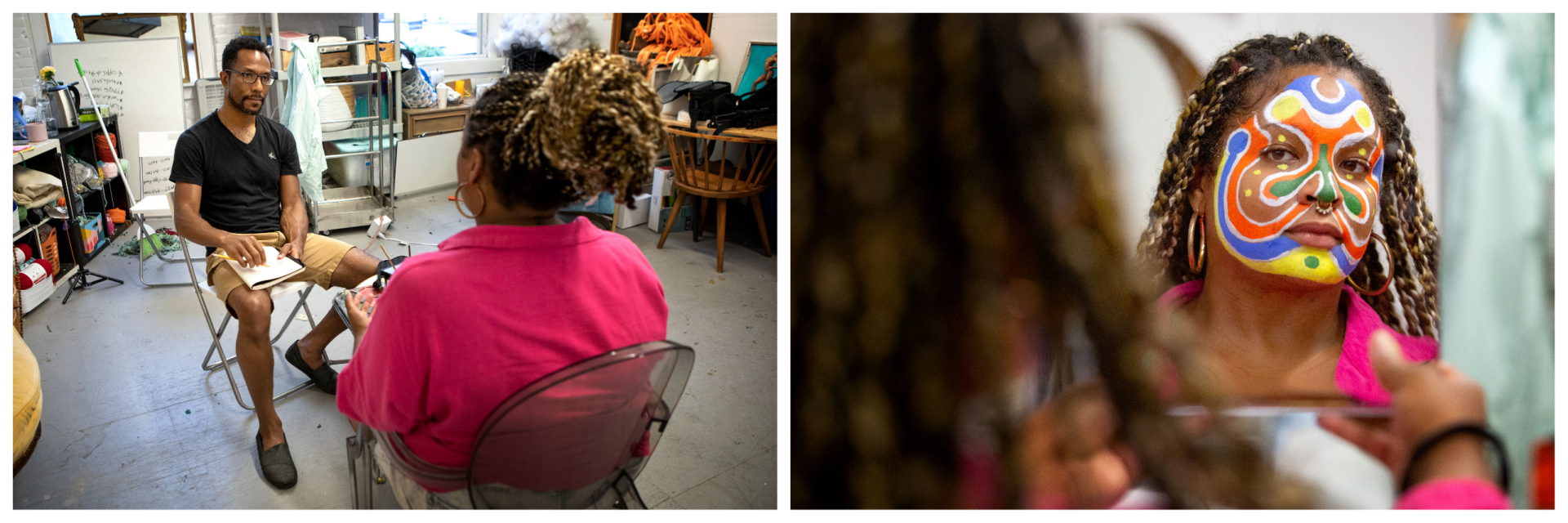
We all wear masks, whether it’s when we’re at work or at home or with our loved ones. For people of color, forms of masking — like code-switching — highlight how the idea of masking comes with negative connotations. Often, for POC, it means adjusting to fit in with the dominant culture. Callahan wants to turn that notion on its head. “Mask work is about bringing what's inside out and wearing that with pride and to use our bodies as art forms.”
A pertinent part of Callahan’s artistic practice is community engagement. This summer, he wrapped up his second MassQ Ball , an outdoor festival that brought live music, ritual, art demos and more to the Arnold Arboretum, co-produced with Castle of Our Skins. “The theme for this ball was really about origin. So return to the origin and where we come from,” Callahan explains. “And the ball in and of itself is just a platform for celebrating the arts and culture, specifically of people of color.”
While “MassQing” has become a large part of Callahan’s art practice, it’s only one part of his larger artistic ethos. Callahan is also a musician and is currently the director of the Roxbury Cultural District, which was established in 2017 to preserve the past and present cultural and artistic contributions of the neighborhood. “What's challenging about Boston in general is it's super gentrified, super segregated, super inequitable,” Callahan says. Part of his responsibility in the role is to help foster an environment that allows Roxbury artists, like himself, to thrive. “How can we keep our artists here and make them feel like this is a place where they can take their artistry to the next level?”
Beyond his community work, Callahan is using “MassQing” as a vehicle to explore the darkness of the human mind and bring it to light, particularly through film. His first major project, “Come On In,” debuted at the 2020 Roxbury International Film Festival . Slightly autobiographical and mostly a psychological thriller, Callahan stars in the lead role as an artist returning home after burning out in California. Upon arrival in Boston, the artist finds himself drawn into a journey of self-discovery.
Callahan describes the film as “a way for me to again process what I've been through.” “Come On In” helped unfurl important conversations from viewers about mental health and more. For Callahan, it really encapsulates what his art is all about. “I think that is the power of art, that it's like an alchemy,” he explains. “You can take even your struggles and you can convert it into something beautiful that other people can experience and be fulfilled by.”
Harley Takagi Kaner
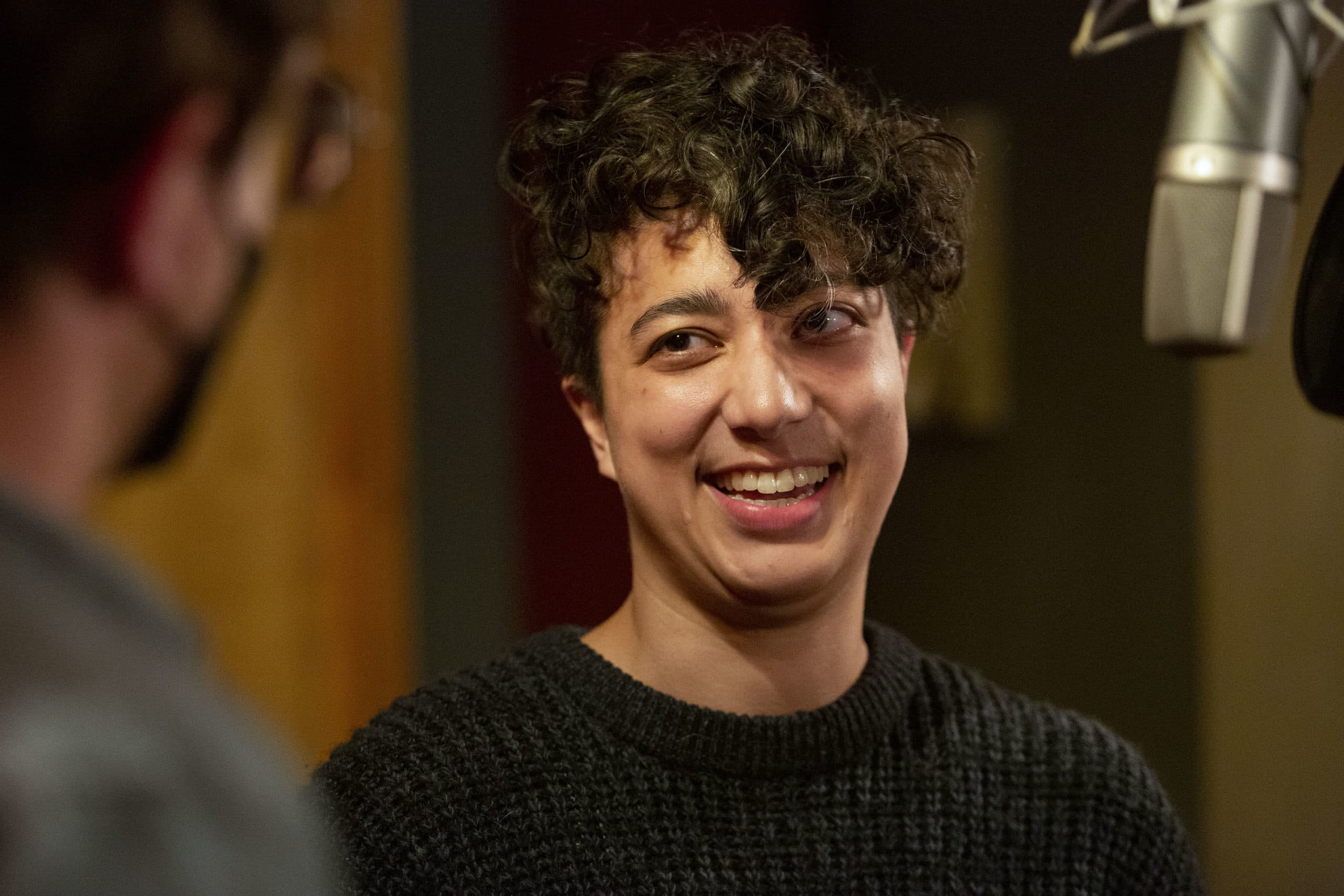
“How many male bisexual leads can you think of in media?”
That’s the question that sent Harley Tagaki Kaner, 32, down an odyssey they didn’t expect to embark on. One podcast, two wildly different nonfiction storylines and over 8 million downloads, all spurred by Takagi Kaner’s desire to have representation — of themself.
They decided that one of the lead characters — the brooding, sharp-witted private detective Juno Steel, who lives on Mars — would be bi. Later on, the character became nonbinary.
“In the meantime, I also became nonbinary. And truly the show has influenced me, in turn, a lot,” Takagi Kaner says. “So, in some ways, sometimes I would decide something for the show and then would come to believe it later, if that makes sense.”
In addition to the story that takes place on Mars, Takagi Kaner’s “ The Penumbra Podcast ” also chronicles a story from days of yore with knights and magic and monsters.
Whereas the beginning of the show was anchored to representation, Takagi Kaner says representation is no longer “the end-all, be-all of my art.” Now, they’re focused on reflection — on who they are and who they want to be. Sometimes, it’s serious. Other times, it’s not so serious.

“Well, one of the characters that I would say is me at my worst is a genderfluid witch,” they say with a laugh. “She is extremely whiny and very complain-y.”
But some characters are reflections of what Takagi Kaner aspires to — like a spaceship pilot with a troubled and traumatic past.
“I mean much more troubled and traumatic than my own,” Takagi Kaner says. “One of the things that he says that I really love, which I can't quite take credit for, because my co-creator [Kevin Vibert] is the one who wrote the words — he talks about how there are certain things that he chooses to believe because he thinks that his belief changes the world. And I love that.”
Takagi Kaner says it can be hard to live up to those words, but it’s nice to have the sentiment enshrined in this work that they can always listen back to. They say their family doesn’t listen to the podcast because things became strained when they came out as trans. But like the space pilot, Takagi Kaner believes in the silver lining, saying “The Penumbra Podcast” has brought them somewhat of a chosen family with their collaborators and audience.
“I’m close to my co-creator and people who work on the show,” they say. “At this point, it's hard to separate ‘The Penumbra’ from this whole time of my life.”
Iaritza Menjivar
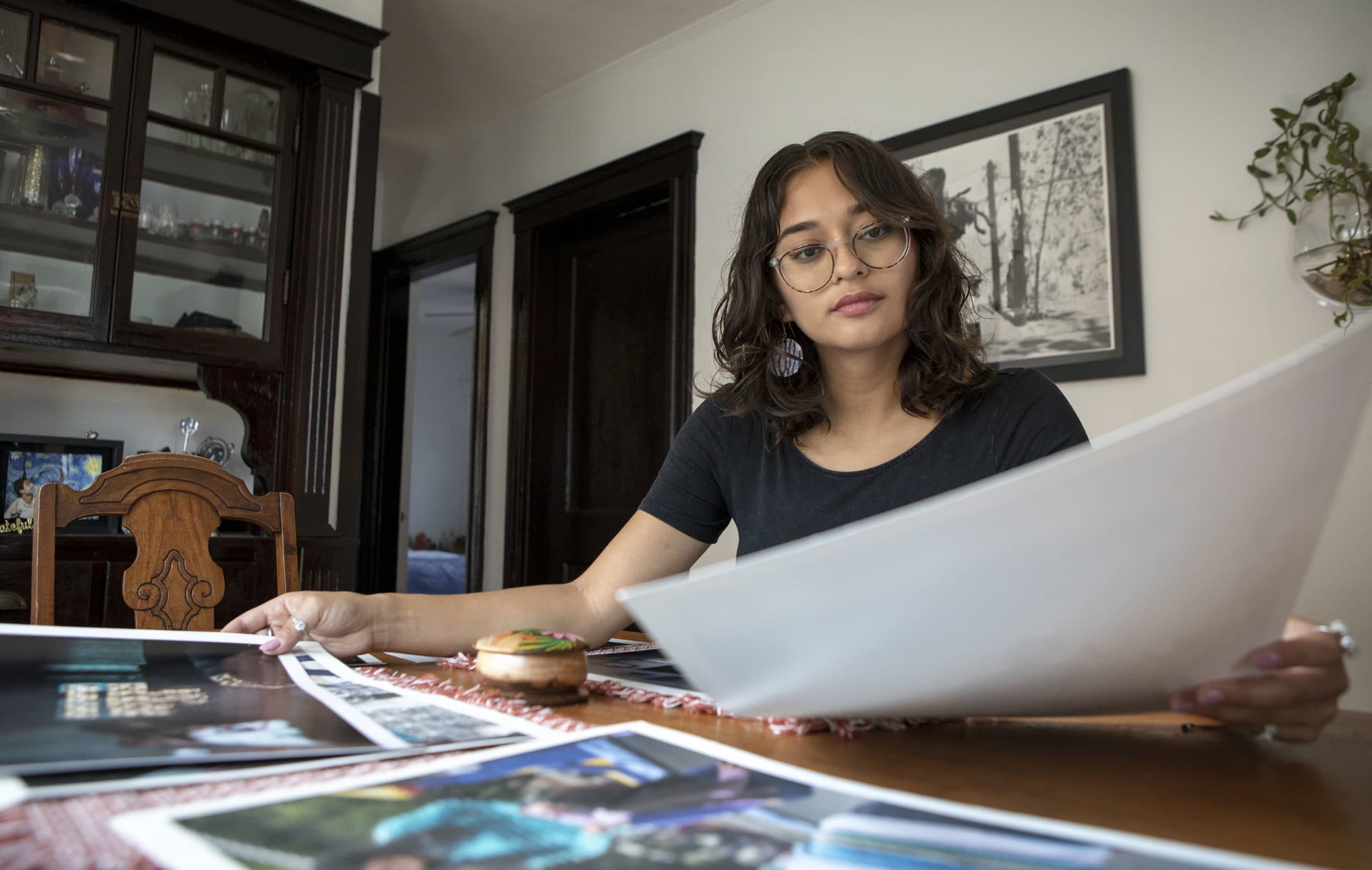
Iaritza Menjivar ’s photographs have appeared in the Washington Post and the Boston Globe. She has photographed Massachusetts political luminaries: Joe Kennedy and Deval Patrick, among others. But her most consistent subject has been her family.
It started as a matter of convenience, a way to fulfill college photography assignments without paying for a studio or hiring models. “Whenever I had an assignment, I would find a way to either use my mother or my aunts. And they were always extremely supportive,” says the Somerville photographer, who also works as the events and public art coordinator for the Somerville Arts Council. “But as time went on, I realized that there was this thread that connected all the images together.”
That thread was the daily life of her sprawling extended family. Menjivar’s parents immigrated to the States from El Salvador and Guatemala before she was born, raising children while working long hours for little pay. Menjivar wanted to capture the fleeting moments in everyday life that were easy to miss, and hard to express in words. “Things in life that might go unnoticed,” she says. “Moments, stories, expressions, emotions.” The 29-year-old has been working on the project, which she calls " First Generation ," since college.
“Sometimes my aunt would be in the kitchen right straight out of work, and I would take these images of her at the table, feeling all tired... and she'd be like, ‘Why?’” Menjivar says. “And I'd be like, ‘I know, but this is what I want. I want these natural moments, these honest moments, of you coming back from work from a 14-hour day at a factory, extremely tired, and you're still cooking dinner for your husband. This is the kind of image I want to make.’”
The images Menjivar ended up making were compelling enough to be featured in the New York Times Lens Blog in 2016. Menjivar says the series took on new meaning in the Trump era, when bigotry toward Central Americans became more palpable. “It feels strange to walk into a place and feel like people are just staring at you, looking down on you,” Menjivar recalls of that time.

Still, her photography remained resolutely focused on the intimate moments of family life. In “First Generation,” mundane domestic spaces transform into quietly dramatic tableaux, made luminous by the glow of a laptop or the eerie blue light from the television. One such photograph centers on Menjivar’s younger brother, Hugo. The teen stands just outside the door to the living room in his father's house, silhouetted against deep red wallpaper with a baroque floral design. He looks down at his phone, his face lit up by the screen. Next to him, the rest of the family can be glimpsed through the doorway to the living room.
Menjivar points out a framed picture on the wall behind Hugo that says “hope.” It could represent her parents’ hope for a better future, she says.
Or it could represent their children’s yearning for a life of their own.
“It's like a bittersweet feeling, right, because we want to be there to support them, but we also have this life that we want to create for ourselves and be independent,” Menjivar says.
In the photograph, these twin hopes live in different worlds, side by side. The image is literally divided in two: on the right, the family clustered in a circle; on the left, Hugo, in a rare moment of solitude.
These days, Menjivar is seeking more solitude. During the pandemic, she realized she needed to tend less to her family, and more to her own needs. The decision has caused her some guilt; she is acutely aware of the sacrifices her parents made to give her a better life. “But there is a time that you have to start to realize that you can't save the world if you can't save yourself,” she says. “If you can't be there for yourself, how are you going to be there for your family?”
Menjivar originally envisioned “First Generation” as a lifelong project, but for now, it’s on hold. She is embarking on a new photography project, with a new subject: herself.
J. Shia
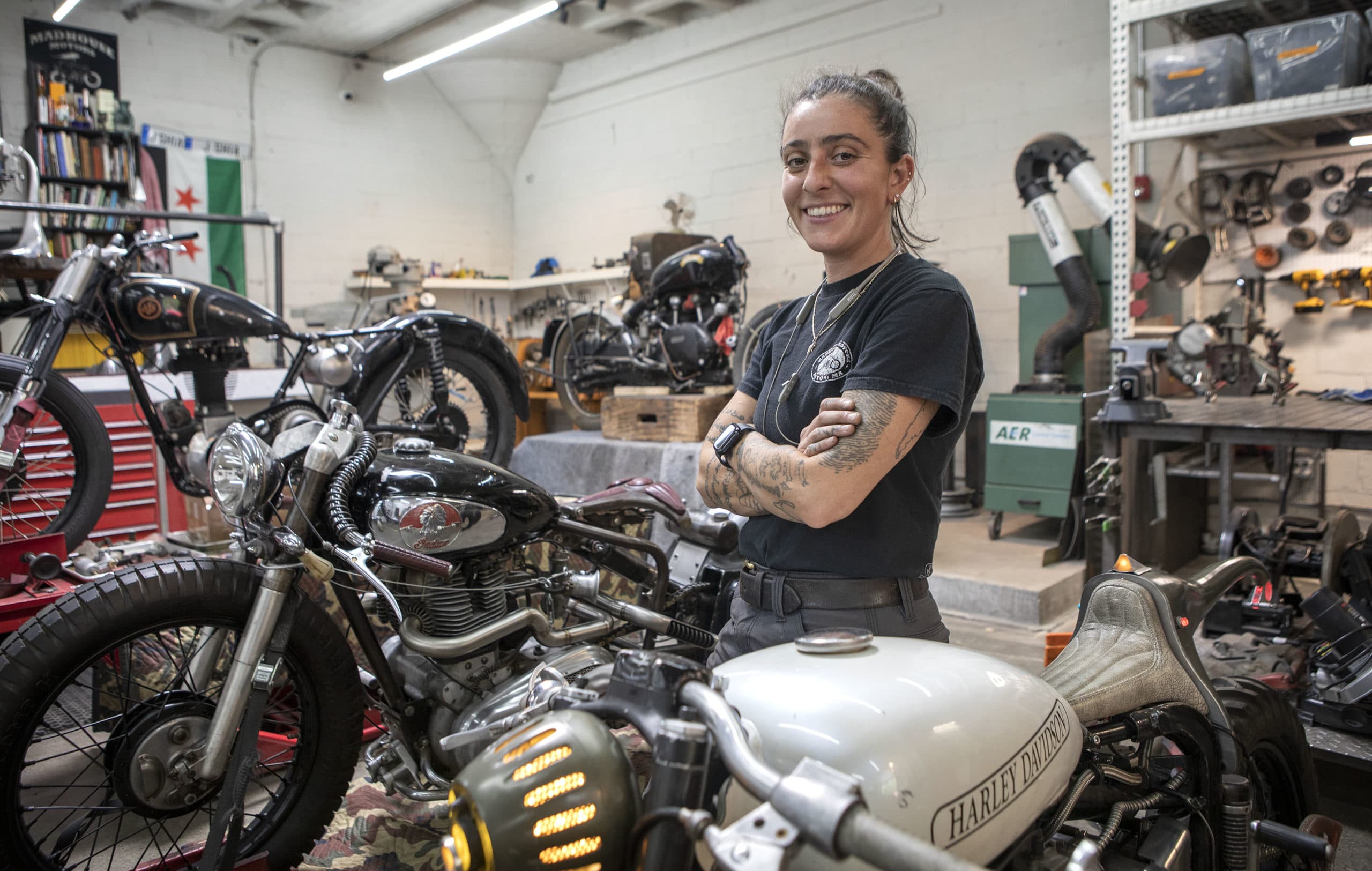
J. Shia's vehicles of expression roll and rumble, but how her art bikes look is what really sets them apart. This fourth-generation metalworker didn't set out to be a custom motorcycle builder, but it's not surprising since Shia grew up with a soundtrack of lathes, welders and mills.
“My family is from Lebanon, all the guys were tin smiths and mechanics,” she explains. “When they came to the States, they brought tools as their trade.”
The family settled and carried on their legacy in Cambridge. But as a teen, Shia dreamed of being a war photographer. She got into MassArt, then volunteered to raise a friend's baby. To support the child while paying tuition, Shia resorted to fixing motorcycles in her family's yard. “I was doing tire and oil changes in the cold and the dirt,” Shia recalls. “It was just a way for me to survive.”
But that all changed when Shia was 27. A friend called with an invitation to a competition called “Motorcycles as Art.” Shia says the concept of refurbishing a bike purely for entertainment and self-expression was liberating, “because it made me fall back in love with the machine itself.”
Shia's art bike was a hit at that show. Jump to now and the 32-year-old repairs and restores bikes at Madhouse Motors , her own shop in Roxbury. But Shia also transforms classic machines (think Harleys and Indians) into heavy, rolling sculptures that have vintage metal objects playfully embedded into their designs.
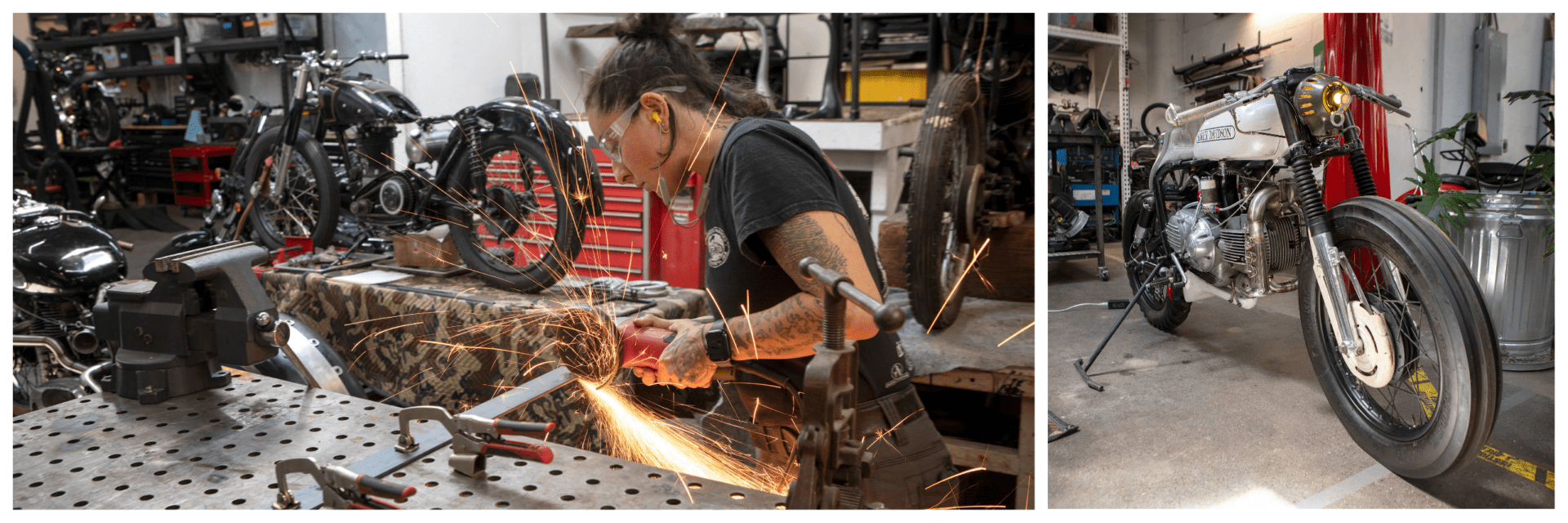
“The point of me creating them was for the sake of art, to build a sculpture, to intrigue the viewers who — as they get closer and look at it — start realizing that what they're seeing are not just motorcycle parts.”
Among the hidden surprises, you'll find manual pencil sharpeners and old rotary phones, along with parts from old taxi cabs and a little red wagon. In Shia's world, a defunct weed whacker plays the role of chain guard and an egg-slicer becomes a functioning taillight.
While working, Shia often listens to classical music. Tchaikovsky's “Swan Lake” inspired her to design and construct a pair of bikes — one white, one black — just like the two characters in the ballet. The doppelganger motorcycles starred in a slick video she filmed at Symphony Hall. In 2021, Shia displayed them at Art Basel in Miami where they upended people's perceptions.
“Motorcycles have historically been viewed as a hardcore thing,” Shia says, pointing to the exhaust on the white “swan" bike that's made out of a soprano saxophone, “and when people see that they laugh. That just makes me feel like it's all worth it.”
A collector purchased the black “swan" bike, but Shia held onto the white one. These sculptures have inspired this multiskilled creative to grow – as a fine artist and an award-winning bike builder. Shia celebrates the beauty of motorcycles each year at a community “Moto Show” in Cambridge called Wild Rabbit . She’s also proud to say her grandfather's tools are still being put to very good use.
Lilly Rose Valore
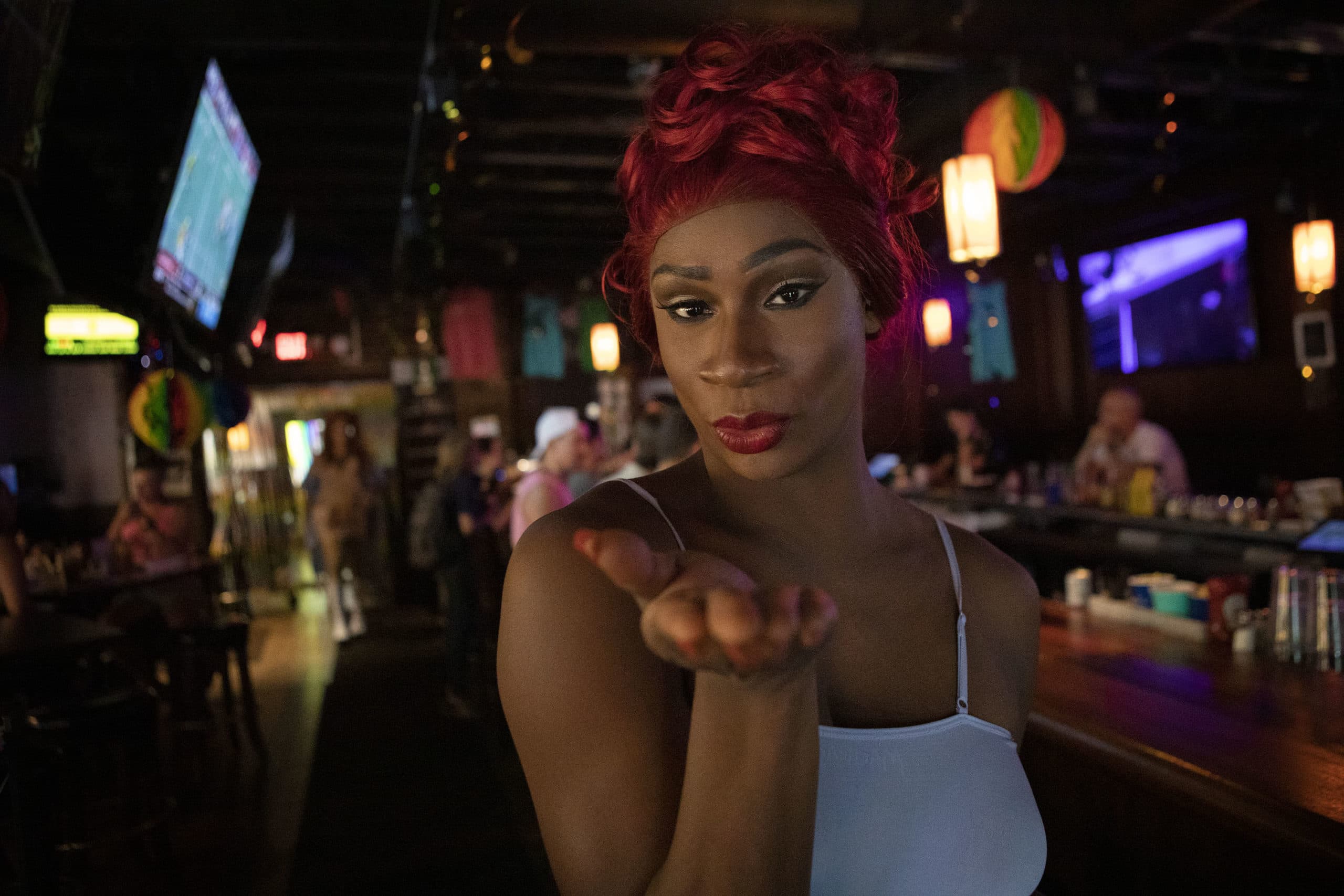
An hour before drag brunch on a recent Saturday at Dorchester’s Harp and Bard, the host — Lilly Rose Valore — is running around in her street clothes and full makeup. She’s coordinating with the front of the house and the DJ, and helping the other performers get ready. This is her second event of six this weekend.
“You go to the first show on Friday, and then when you get home you have to unpack, repack, wash things — by the time you get to bed, it’s like 4 a.m. And then you have a brunch at 11 a.m.”
Her sets are high energy. There is no performance space in the restaurant, but that doesn’t stop her from cartwheeling between booths, kicking into a handstand in the doorway and voguing on top of the bar as she navigates breakfast plates and glasses of bloody marys.
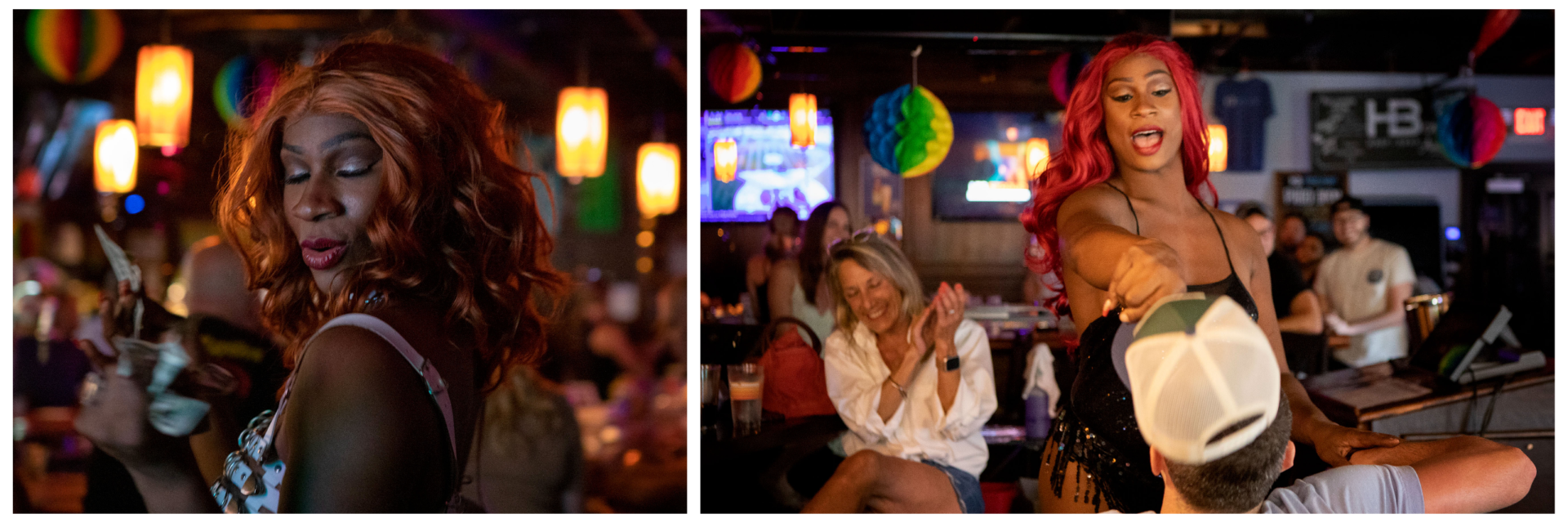
“Somebody asked me today, ‘what can you expect with a Lilly Rose Valore number?’” she says to the crowd after her first set. “I said flips, splits, stunts and tomfoolery. Did you love me?” Their loud cheers and applause suggest that they do.
Valore is a classically trained dancer, model and artist, but she feels most at home as a drag performer. “There’s a lot of things that I do, but I never feel nervous when I’m performing around people who are just like me, who were pinned as outcasts,” she says.
During the COVID-19 lockdown, Valore started making videos about female empowerment and the contrast between her public and private experiences as a Black trans woman. “People know me from being out and about, and they're like, ‘oh, that girl is so happy,’ but a lot went into who I am today, and it took a lot to get here.”
The 26-year-old artist encourages others to show up authentically and share their stories because she thinks more awareness of the full spectrum of gender and sexual identities will lead to a better tomorrow. “I've gotten a lot of survival tactics, and what helped me get through my hardest times were just the people that I surround myself with,” she says. “Community can push you to feel empowered.”
Valore says she will continue making the videos, as they’ve allowed her to reach a different audience online, and at galleries and festivals. But her artistic home is getting up-close-and-personal with her community through drag.
Lily Xie
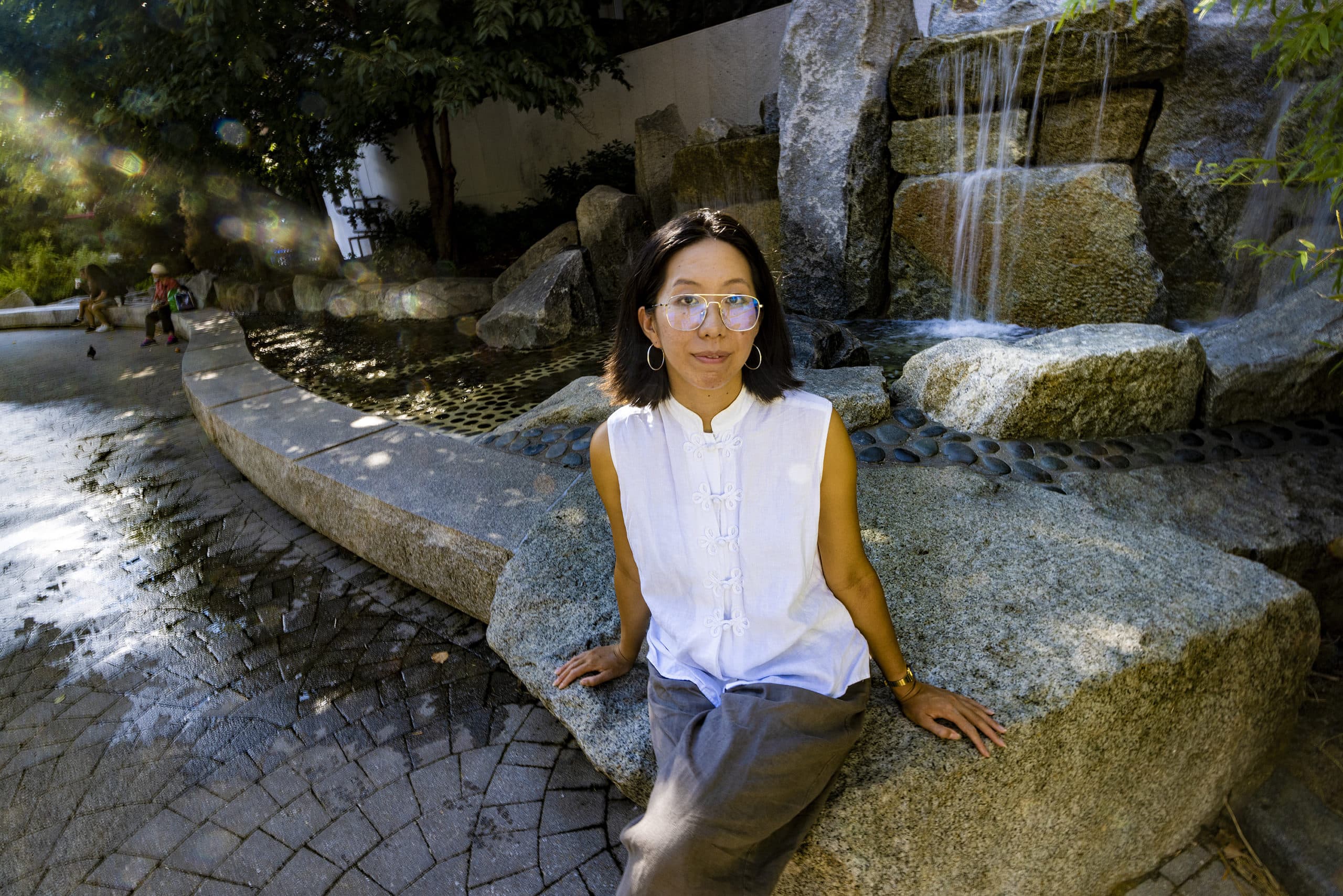
Multimedia artist Lily Xie lives in Jamaica Plain, but she finds her inspiration in Boston's Chinatown. “A lot of my art is about trying to make space for communities to have the audacity to dream about their own neighborhoods,” Xie says while sitting on a bench in Mary Soo Hoo Park.
With the iconic Chinatown Gate in view, Xie describes the vibrant scene around us. “There's lots of elders here playing cards, talking trash, gossiping, hanging out,” she says. But as sirens scream past, Xie notes it's also incredibly loud.
“Chinatown, like many communities of color, has a highway running through it,” she says. “That contributes to pollution and the noise that we're hearing right now.”
To build Interstate 93 and the Mass Pike in the 1950s and ‘60s, countless Chinatown homes and businesses were razed, displacing 20% of the population. The harsh, long-term impacts on the neighborhood drive Xie to engage the public in “spatial justice” projects.
“Spatial justice in Chinatown means how can we get access to more affordable housing, more open space,” she says. “But it also means — at the end of the day — how can working-class immigrant residents, who are the most generally marginalized, have the life that they want in whatever way that means for them?”

The 27-year-old explored those questions in a 2021 public installation called “ Washing .” For that project, she recorded interviews with residents and asked about their hopes for the neighborhood. They also shared their daily struggles living with the fumes, congestion and heat.
One person contemplated the Big Dig and wondered why officials decided to move I-93 underground everywhere except for Chinatown. Another talked about the gobs of money they spend on air purifiers. Many said they won't even open their windows for fear of the filthy air. With collaborators Charlene Huang, Chu Huang, Dianyvet Serrano, and Maggie Chen — along with the Asian Community Development Corporation and Pao Arts Center — Xie amplified the residents' voices in a series of outdoor, audio-visual events.
“You know, we're bringing people back into the sonic landscape who are usually ignored, not invited, and sometimes even erased,” Xie says.
She has gathered people's narratives for other projects, including the Chinatown Story Cart which included mail-in art kits for families to work on during the pandemic shutdown. Xie also animated a film with the Chinatown Community Land Trust that envisioned what active, neighborhood governance could look like.
“I really want to just make space for Chinatown residents to tell their own stories,” she says. “I think artwork is one of those rare instances where regular people can really help shape something that comes to life and that they can see and touch after.”
Xie wants her art to work hand-in-hand with organizations and activists fighting for a more flourishing Chinatown. She also looks forward to future collaborations with the public as an artist-in-residence at the Boston Planning and Development Agency.
Michael Aghahowa
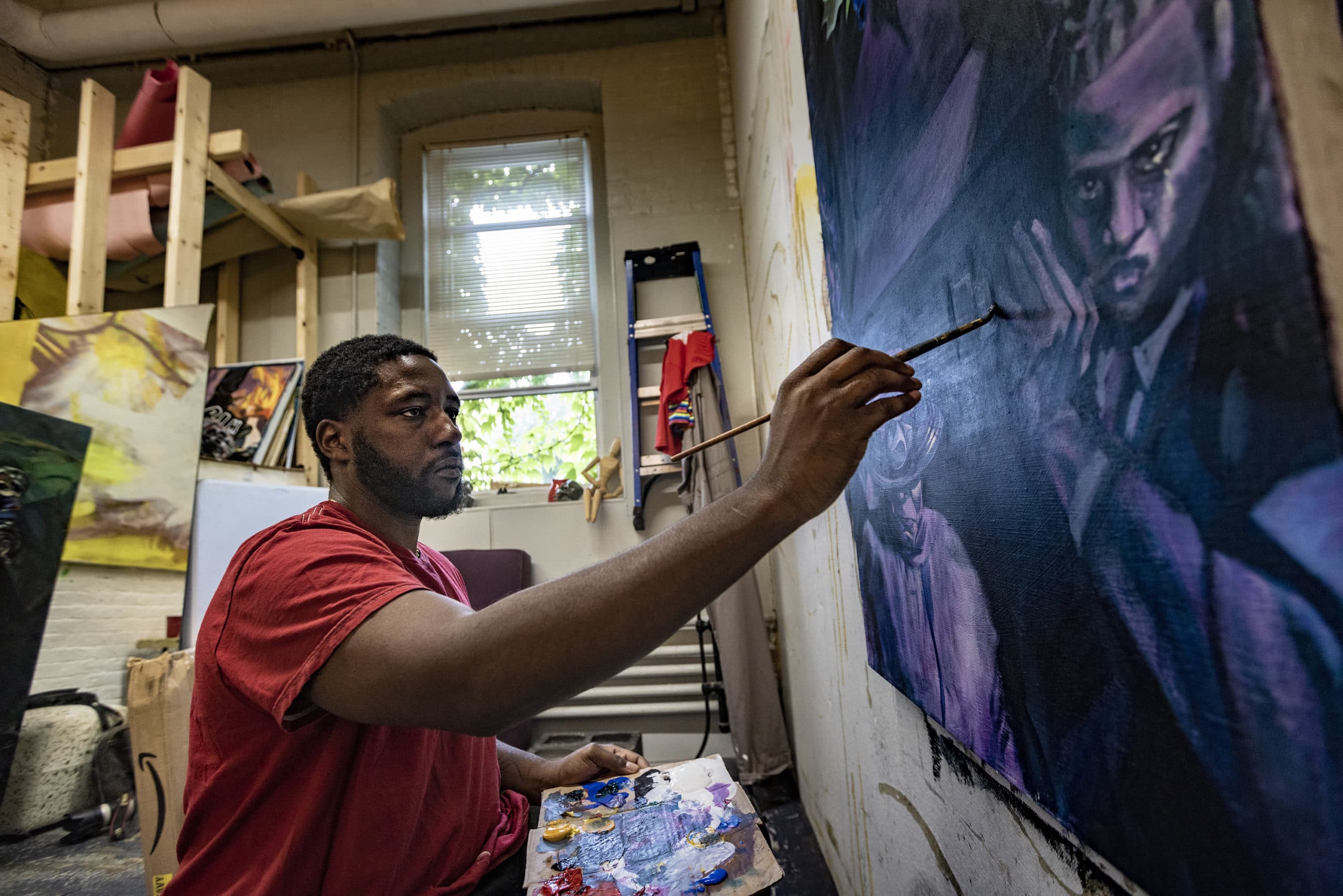
Michael Aghahowa ’s art can be seen across Lynn — the community he loves — on walls and album covers, in bold colors that move and make a statement.
Outside Ernie’s Harvest Time last summer, he created a scene of abundance, outstretched hands that pass fruit like mangos and pineapples to other open palms. As he painted, families dipped their own fingers in paint, covering a nearby wall with hundreds of multicolored handprints.
“You could see in my old work, I was afraid of painting hands, like getting into the details,” he says. “It was a challenge… I told myself if I could do that, then I could paint anything.”
Aghahowa’s love of art started young. He remembers diligently trying to craft a lemon tree out of construction paper in kindergarten. Every time he had an art project at school, his mom helped. His skills grew, moving into illustration and then painting, eventually attending Montserrat College of Art in Beverly, where he graduated with his BFA as a first-generation college student. For his mother’s 50th birthday, Aghahowa presented her with a portrait of herself aglow in yellow. It made her cry happy tears.
“She was like, ‘when did you get that good?’ She’s seen the whole process,” he says.
When he started painting, he responded to the way it required him to use his whole body to make one mark. This is one of Aghahowa’s favorite aspects of painting. The ability to make a mistake and find beauty in the flaw.
“You can make a mark and then completely cover it up or wipe it away,” he says. “And then sometimes even that wiping away of the mark... does something beautiful and something that you wouldn't expect.”
The 28-year-old now experiments with the form, recently using a mirror to refract sunlight off his subjects in a series called “Parts to a Whole.” He adds dimension with charcoal, scrap paper and molding paste. It’s hard to tell where his subject ends and the light begins. It’s meant as a reminder: no people are a monolith.
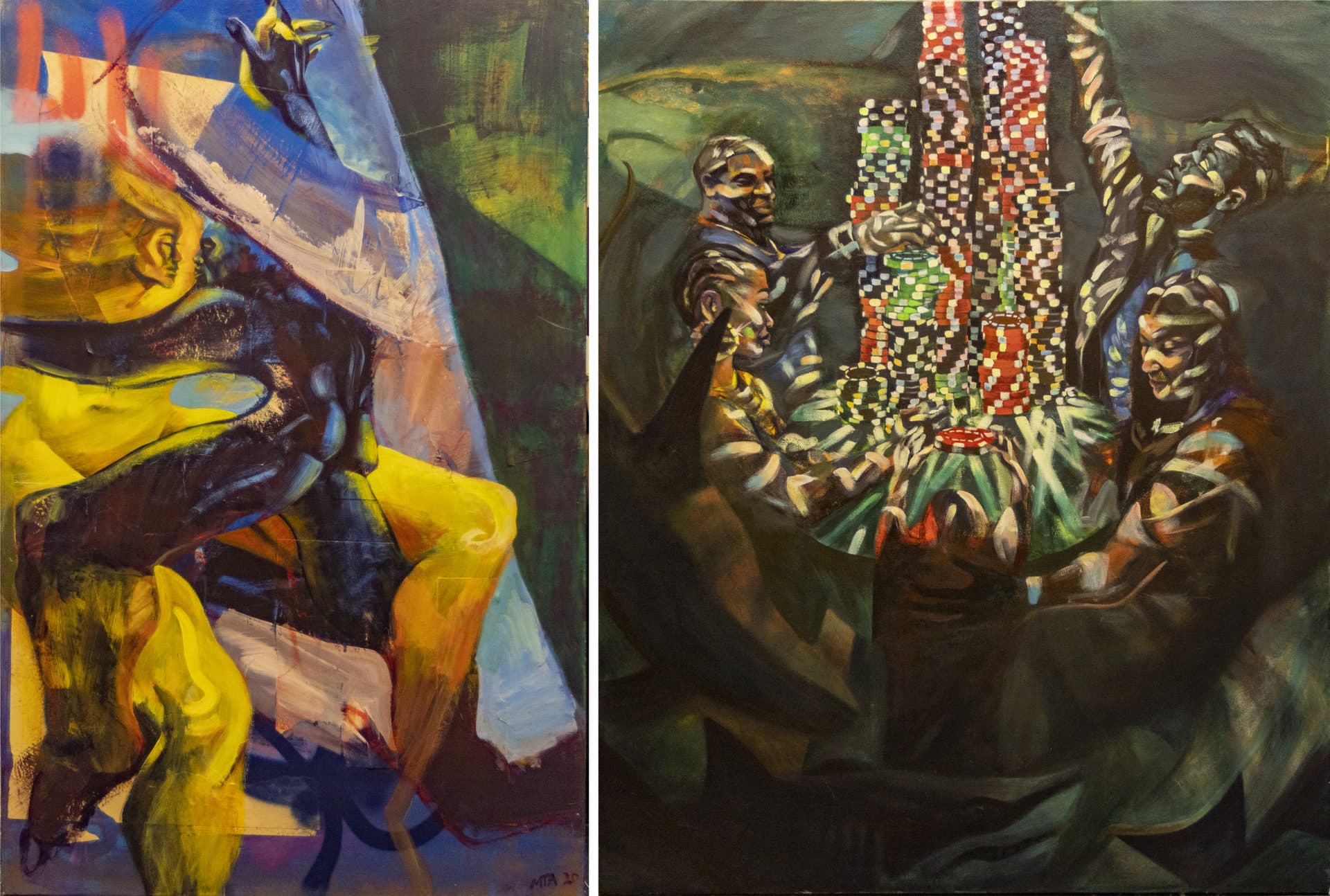
In his painting called “The Numbers Game,” he portrays a group of almost god-like beings placing bets at a table in what resembles an ocean while sharks swim around them.
“The poker chip is symbolic, not gambling to make a profit, but gambling on each other,” he says. “Like starting a business and hiring each other and uplifting each other out of these situations.”
On a recent afternoon inside his Lynn studio, he mixes paint to finish a scene of a funeral procession. Purple and blue hues capture those in mourning, the pallbearers’ skin the color of dusk. There’s been a lot of loss over the last few years.
“My family's always been like a big inspiration in paintings, but I think lately the death aspect has been on my mind a lot,” he says. “There's something really beautiful about seeing my whole family come together in a time of pain… even after the funeral, there's gathering. Someone might throw a cookout, and then people will show up, and it's just a good time to share memories.”
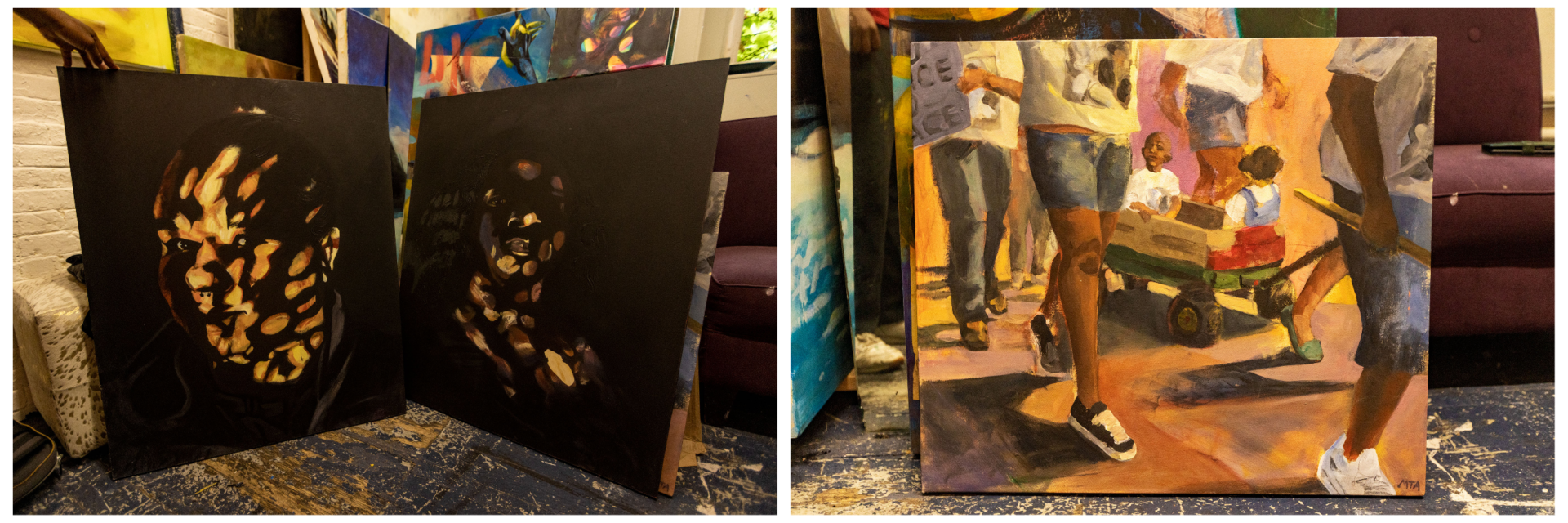
One of Aghahowa’s first paintings was inspired by a moment in time when he was 4 years old. His family pulls him along in a wagon as they march through the street following the death of his cousin in police custody.
“You guys know the triceratops, right?... I remember being excited about learning that they protect their young by forming a circle around them,” he says. “The kids are in the middle. So I really want it to sort of have that same thing here. Like we're protected here.”
A soon-to-be father, Aghahowa can’t wait to bring his little one to the studio, to sit together and mix paint and introduce her to a paintbrush.
Nygel Jones
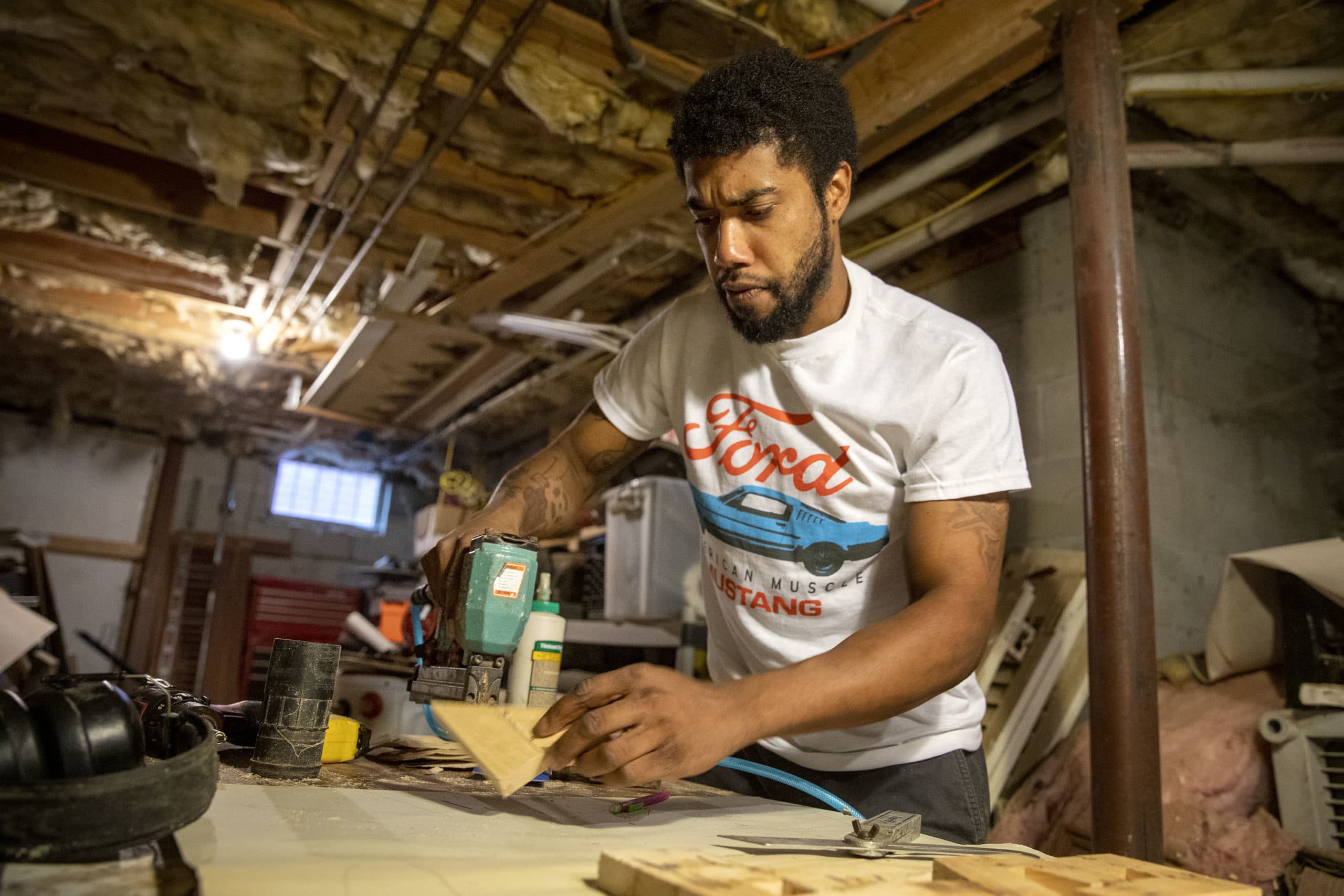
Nygel Jones admits he was a little directionless after graduating from Montserrat College of Art. He got a job at a custom sign and logo company in Boston’s Seaport, and worked on paintings at home. But he remained uninspired. Then one day he watched one of his coworkers use a tool called a T bevel, which carpenters use to lay out angles. It's a simple device, but “the lightbulb clicked,” says Jones. He realized it was possible to build an object that is typically rectangular – like, for example, a picture frame – with sharp, unexpected corners.
So Jones began to build decidedly non-rectangular canvases out of scrap wood in his basement workshop in Roxbury. On them, he painted otherworldly landscapes, sci-fi vistas in orange and pink. And for each painting, he hand-crafted a picture frame that perfectly fit each zig-zagging contour of the image inside. The effect of these early works is like glimpsing an alternate dimension through a jagged rip in the space-time continuum.
Over time, the shapes of Jones’ paintings became more and more complex. Then, one day, he had an epiphany. “Instead of making a shape for a painting, make the shape the painting itself,” Jones says.
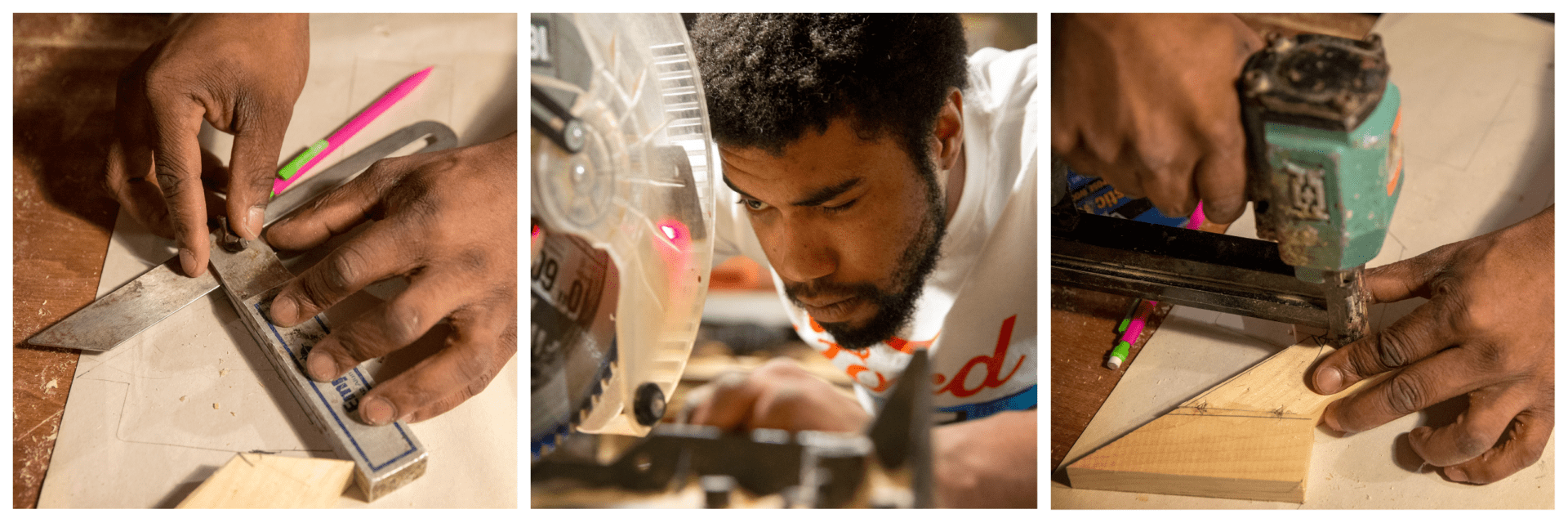
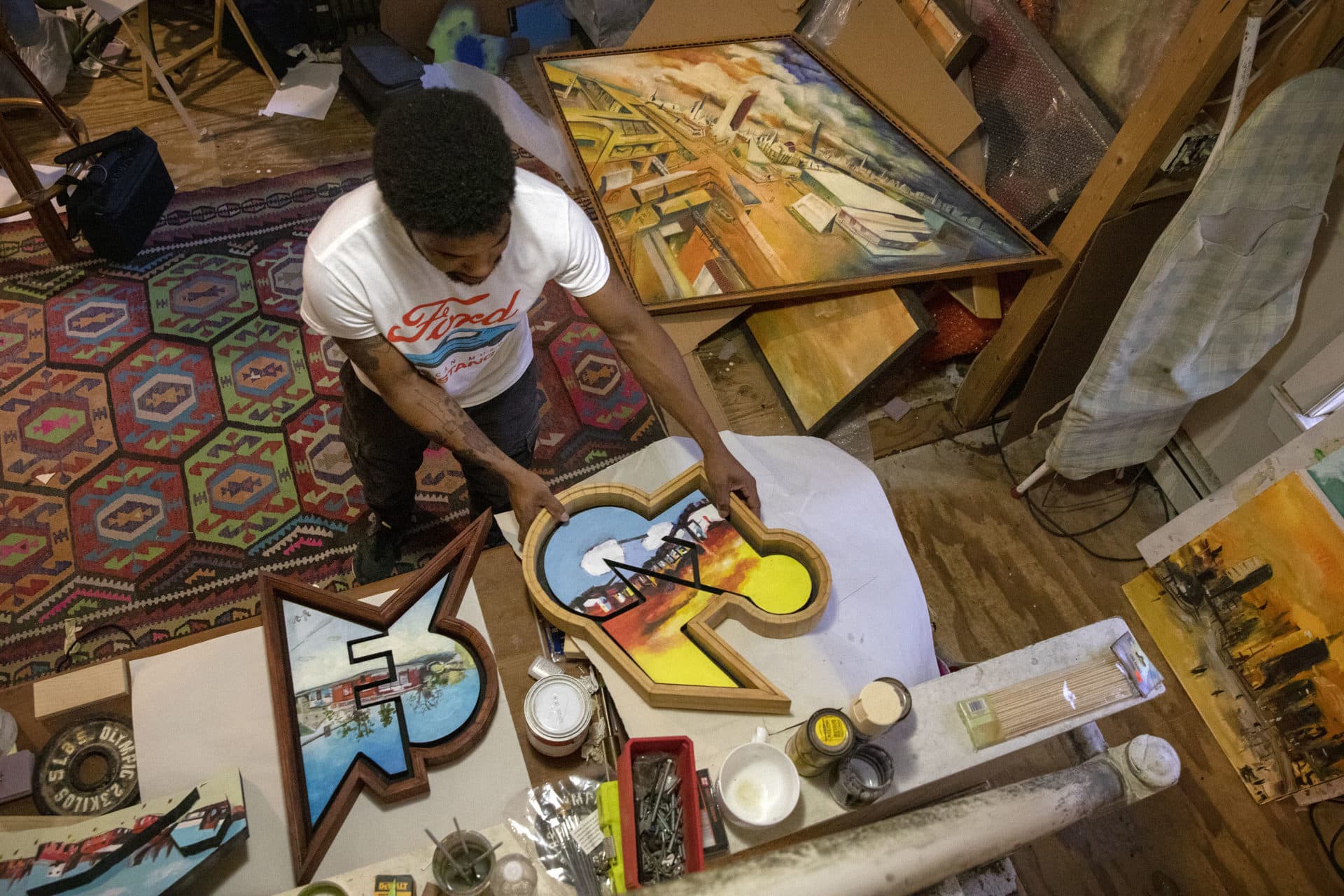
Now the 29-year-old’s paintings — which sell for thousands of dollars — are more like sculptures, three-dimensional shapes that happen to hang inside picture frames. They are abstract, but familiar — like one shape with spikes that drip like icicles, painted in white and cool blue. It's wintry, and slightly malevolent, inspired partly by the cold, futuristic look of the sets on “The Empire Strikes Back.” Other shapes are reminiscent of the looping, dynamic forms of graffiti, or the spiky speech bubbles found in comic books.
Making shapes brings Jones back to his boyhood, building with legos and, when he was older, learning to use his father’s power tools. His father worked in construction, so carpentry is “so close and personal,” Jones says. “I feel at home.”
There's something so satisfying about seeing his oddball shapes finished with such intricate precision, he adds. “To see the end result, looking the way they do, yeah, it never gets old. It's like ‘Alright, make another one and another one and another one.’”
This year has been a busy one for Jones, who showed his work in multiple exhibitions. He's brimming with new ideas for his upcoming trip to Miami Art Week in late fall. There is no end, he says, to the shapes he can invent in his mind.
Olivia Moon
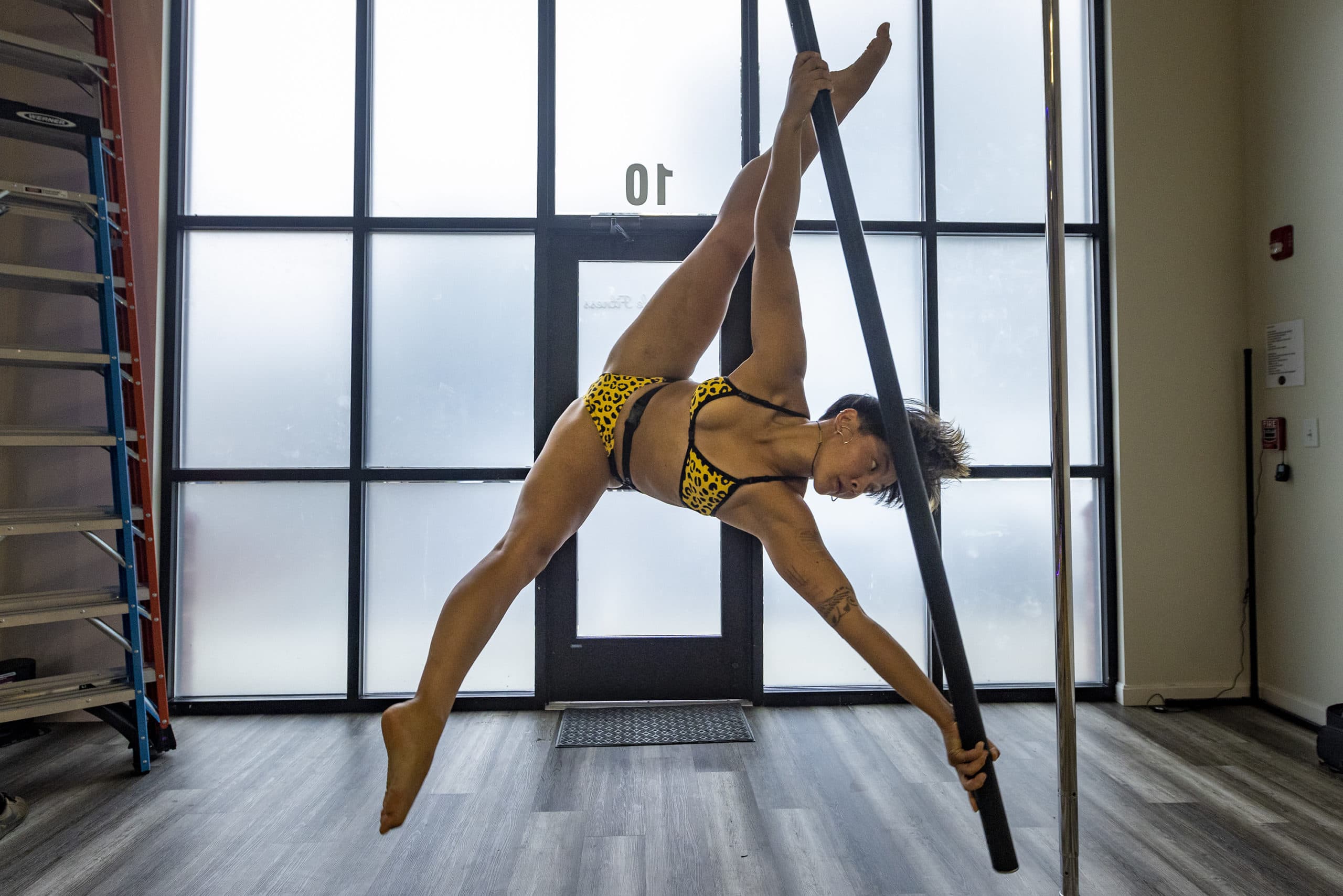
When some of us hear the words “pole dancing,” our minds jump to strippers. “And that's all correct,” Olivia Moon says. “Pole dancing did start via strippers and strip clubs and by strippers of color.” And for this contemporary movement artist, pole is her authentic form of self-expression.
Moon trains and teaches at Boston Pole Fitness , where she clarifies one very practical reason why pole dancers are so scantily clad. “In order to stick to this pole, I’m going to need to wear minimal clothing so my skin’s really gripping it.”
Before each class, Moon arrives early to the studio to work through some choreography. “I sort of improvise around the pole and see what feels best in my body, taking moves low to the ground and then up on the pole.”
With an athlete’s strength and acrobatic prowess, Moon hoists legs and torso high in the air. She twirls and spins around the pole like a performer you'd see in Cirque du Soleil. Then, the dancer flows into a perfect aerial split that cuts diagonally between floor and ceiling. At one point, Moon’s calves grip the pole, suspending her entire body weight upside.
This artist fuses past training with present passion in a blend some practitioners refer to as “contem-pole.” “There's grace, fluidity, focus,” Moon says. “But I also love doing tricks up on the pole, and I love wearing my 10-inch heels and wearing my cute little outfits.”
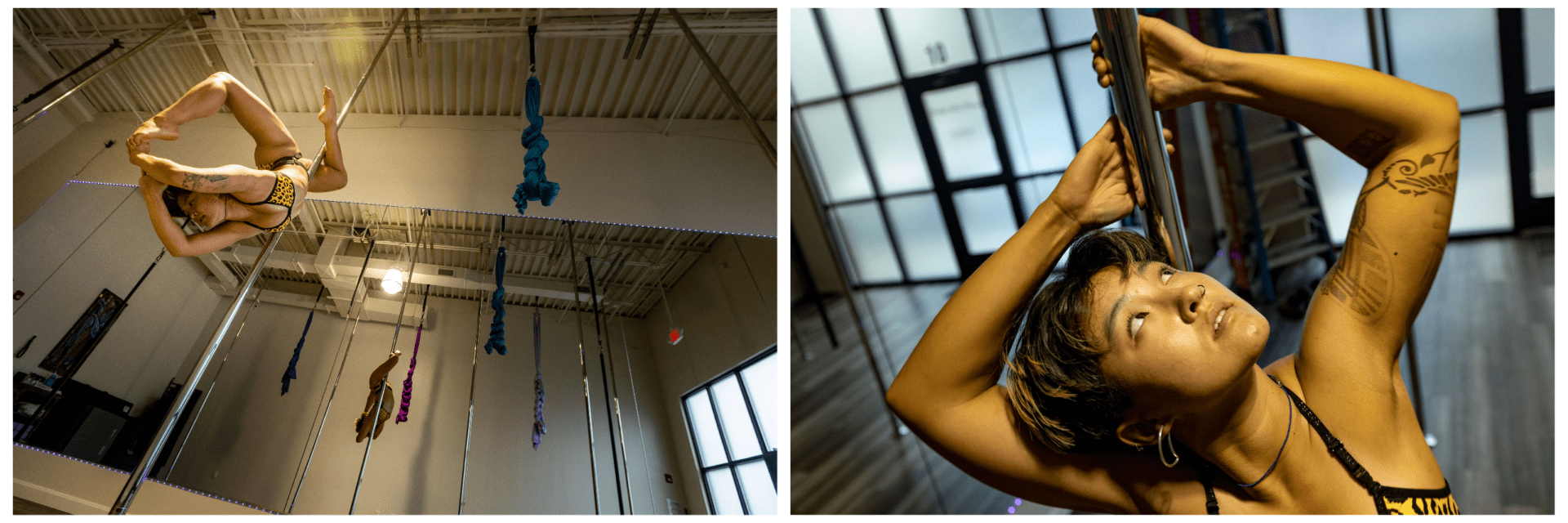
"I wasn't in a great place with my body, and once I started pole, I started seeing a transformation in not only how my body looked, but in the ways that I perceived myself," she says. "Pole is more of an individual representation of who everyone is."
Moon identifies as queer, which for her means anything that's outside the norm. “For me, pole is a great way to express my sexuality and sensuality,” Moon says. “It's a safe space for people who look like me in terms of being different skin colors and different androgynous-presenting looks.”
The pole community celebrates diversity and is judgment-free, Moon says. It’s also super vulnerable.
“We're wearing virtually nothing, and looking at our bodies in the mirrors, and looking at each other,” she says. “I do feel like I can genuinely be myself in this space.”
Moon has taken pole to other spaces including the beach, Boston Common during Pride, and on stage with the contemporary company Kairos (where she's a principal dancer). The young artist uses the name halfasianlens for her dynamic photography work, and has a long list of ideas for combining pole with different genres to create entirely new experiences. But what Moon wants most is to help other people feel comfortable in their own skins, just like she does.
Shanelle Chloe Villegas
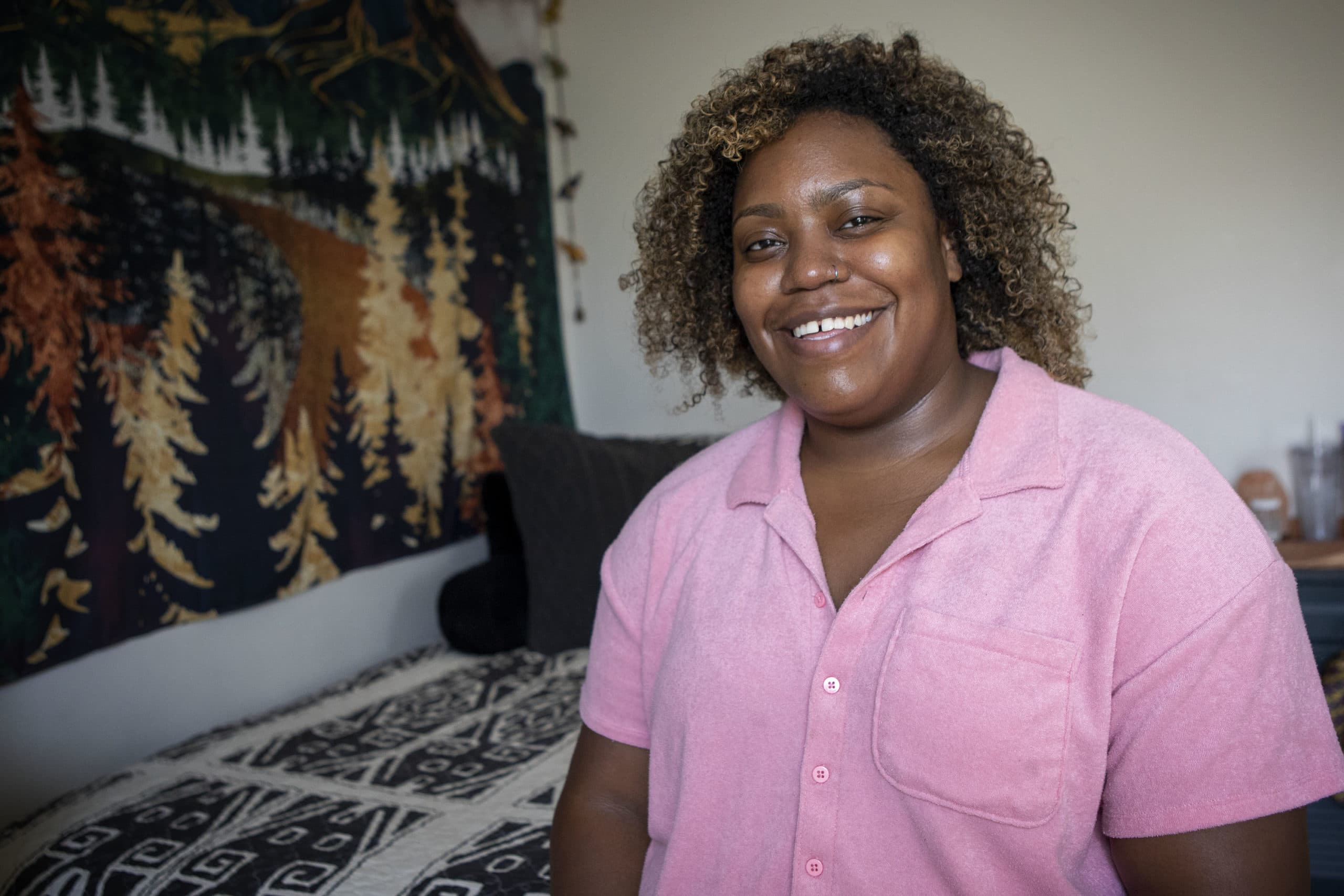
Actor Shanelle Chloe Villegas got into theater as a kid because she liked to tell little lies to her friends, only to reveal the truth for a laugh. When her classmates suggested she audition for the school play because she was “good at lying,” she wasn’t sure what to think. But she went for it. After memorizing a Shakespearean monologue and getting on stage for the first time, Villegas realized she wasn’t lying. The feelings she had onstage were real. She felt seen, and that was life-changing. “The audience signs up to see you and hear you. That made me feel really powerful, even as a young kid,” says Villegas, now 25.
It was so powerful that it changed Villegas' life. She had struggled with disordered eating and depression in her youth. “I felt like I couldn't even laugh. Like I couldn't connect with other people,” says Villegas. Acting was like a tether for her. When she was learning monologues and studying the art of theater, she felt like herself again.
There’s something about a crowd bearing witness to you — and you to them — that speaks to Villegas’ heart. For her, performing is akin to going on a spiritual journey. It makes her feel whole. “I’m not judging myself or the character, and neither is the audience,” says Villegas.
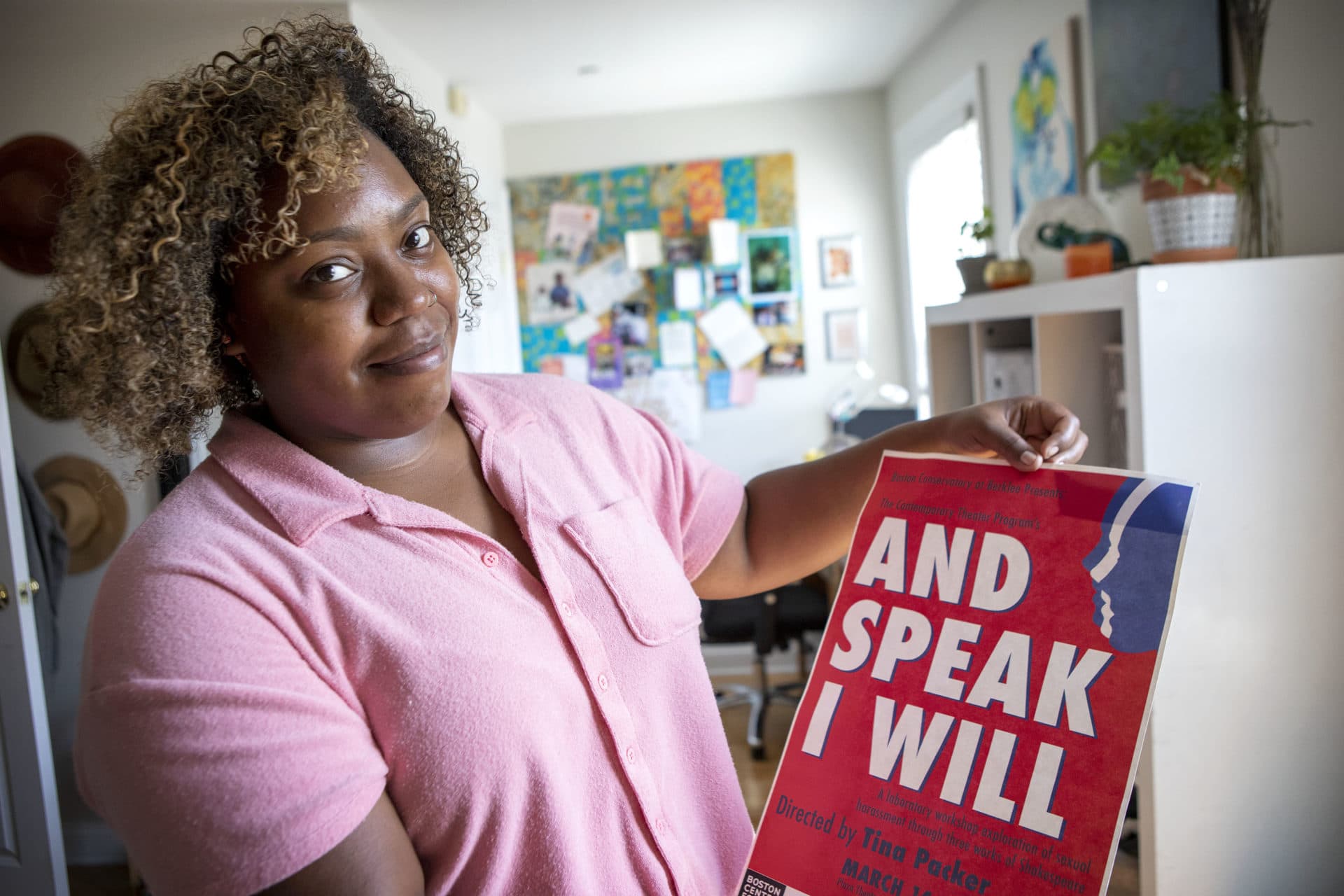
The actress likes taking on roles that allow her to see different sides of herself with compassion — and roles that challenge the audience to do the same. Villegas is expressive, and the parts she runs toward tend to be the same. In one of her favorite monologues from the play “What to Send Up When It Goes Down,” the speaker declares: “You love it when I bite myself because that is the kind of Black story you like. When I am heavy and downtrodden with biting myself. When I wear the flavor of Blackness you like. When it is a warm and fuzzy Blackness that does not creep to your bedroom door at night.” The power of that monologue reaffirms Villegas’ belief in the power theater has to transform people from the inside. As an actor, she takes on scenarios and personas that may not be real. However, they become so on the stage for the audience and performers alike.
For Villegas, those two hours in a dark theater are like another world where humans treat each other with respect and compassion. “That’s another reason I stay with it," she says. "Because that's the world I wish we could have.”
SuperSmashBroz
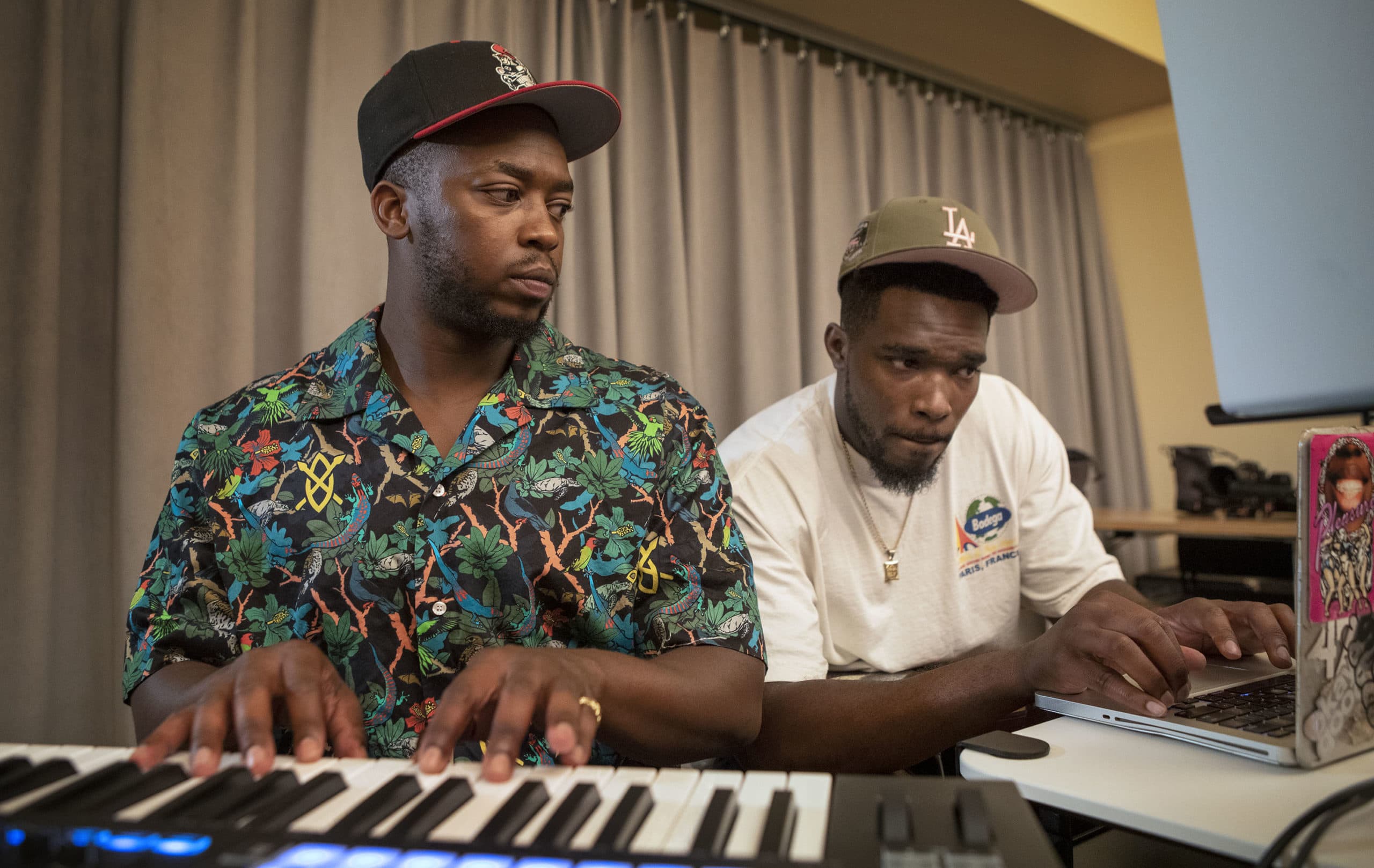
Music is its own language. It connects us, and like a spell, it makes us move. Boston-based duo SuperSmashBroz have a deep understanding of this. All you have to do is turn on one of their songs and wait for the infectious rhythm to kick in. When it does, you won’t be able to resist getting out of your seat. Brothers Muyi and Noma Okundaye want to make you dance. In fact, it’s a family tradition.
The pair hosts parties and DJ for events all over the country — headlining festivals like Caribana Festival and No Hype Fest — are at the center of the brothers' lives today. In June, they deejayed for Boston Mayor Michelle Wu’s inauguration. However, that’s only the tip of the iceberg. They also produce music, write songs and play a handful of instruments, including the drums, xylophone and cello. Growing up in a church and with robust music education in school was helpful. But their devotion to sharing music came from spending time with family who immigrated from Nigeria.
Their parents would host parties in the backyard, where many genres of music — from R&B to Afrobeats to pop — would be spinning. Back then, their dad usually chose the tunes. An enthusiastic music lover, he showed them how a melody has the power to change the vibe in a room. “Whenever the song ‘Lagos Night’ by Soukous Stars would come on at a family party, everyone's legs would go insane,” says 26-year-old Noma. That’s the feeling they bring into their work now.
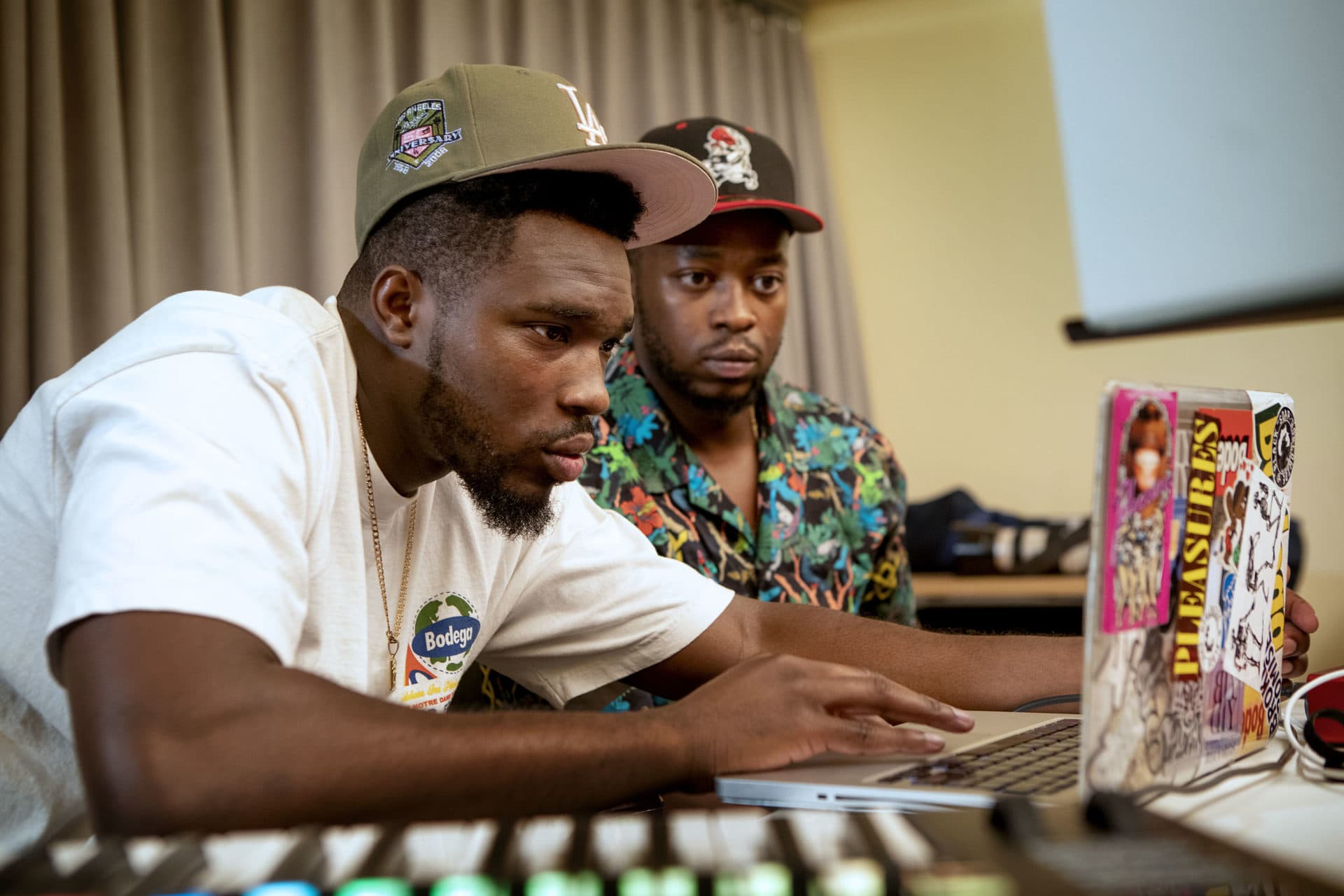
“Whenever we step into an environment, we always bring a new wave or a new energy into the environment,” says Noma. When they were kids, their dad took them to Skippy White's Records, which used to be in Egleston Square. They uncovered new sounds — and worlds — in the rows of records. Muyi, 28, still remembers discovering the best song he had ever heard at the time, Mario’s “Let Me Love You,” at the record shop.
When they craft a set, they want people to walk away with that feeling. The two strive to create a blend of songs that people know and love, and those they haven’t heard yet. “Songs that, respectfully, you're not even going to understand for another year-and-a-half, two years,” says Muyi.
Ten years from now, Noma says they want to take their sound international, curating and headlining a festival in Nigeria. These global-minded tastemakers are on their way.
Victoria Lynn Awkward
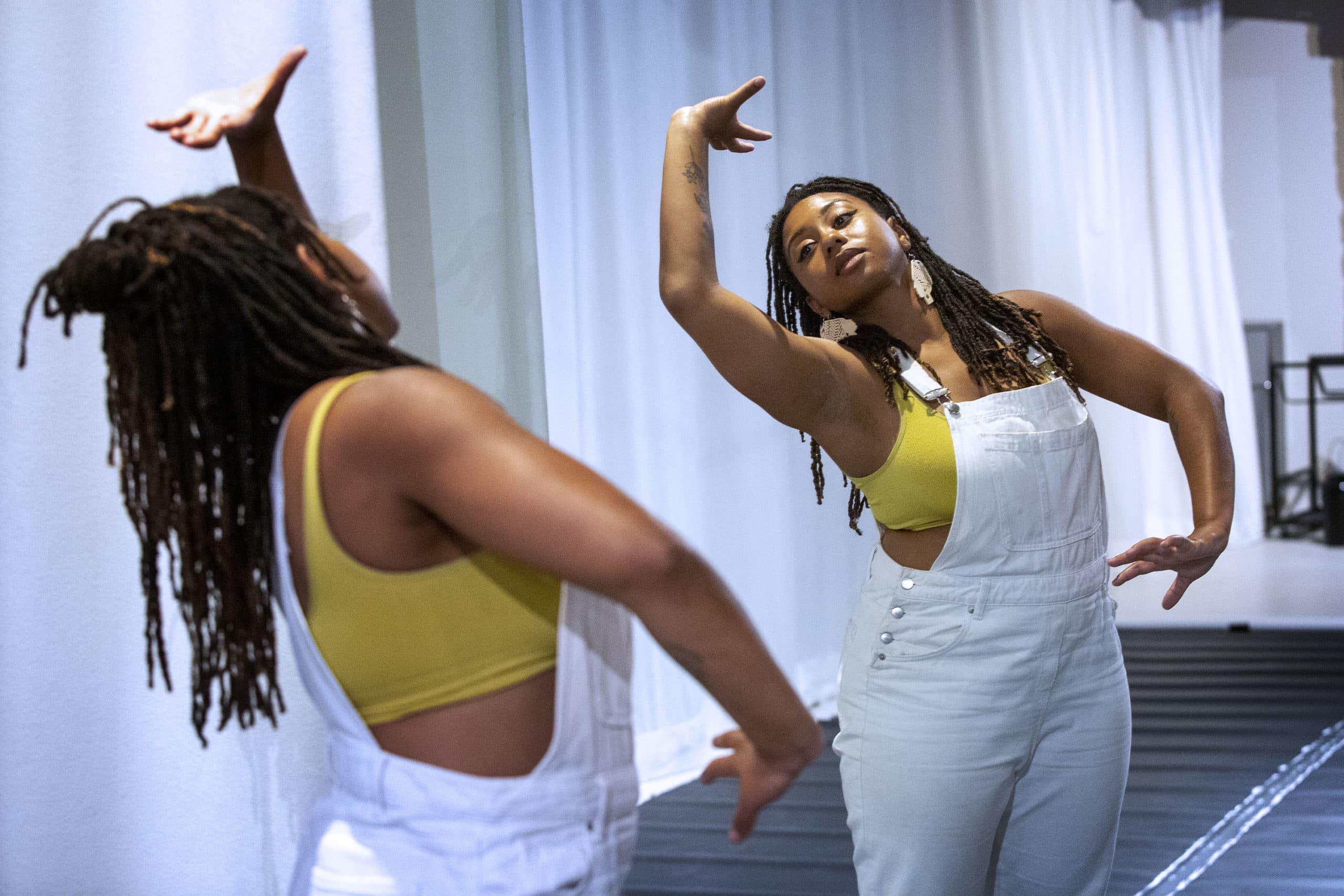
Dancers communicate solely through movement. It’s a practice that requires total body awareness, and a life skill that could benefit everyone, says choreographer and dancer Victoria Lynn Awkward. When she’s not dancing, she works with children as the arts coordinator at West End House in Allston. She sees them struggling to connect and turning to devices for comfort.
“One of the things they do to deal with their anxiety is look at their phones,” she says, noting that it’s not just young people. “We all need to be more present. In this world that has so much complexity, and the pandemic we are living through, we need to be aware of our body or space and connect with people.”
Awkward’s passion is choreography. She feels most grounded in the creative space, fully present with another dancer, building each movement together. Her signature style is low and grounded, but fluid.
“Like pushing water,” she says. “Or I like to say if you're in a body of water that has bioluminescent creatures that you would light them up as you brush your arm through the space.”
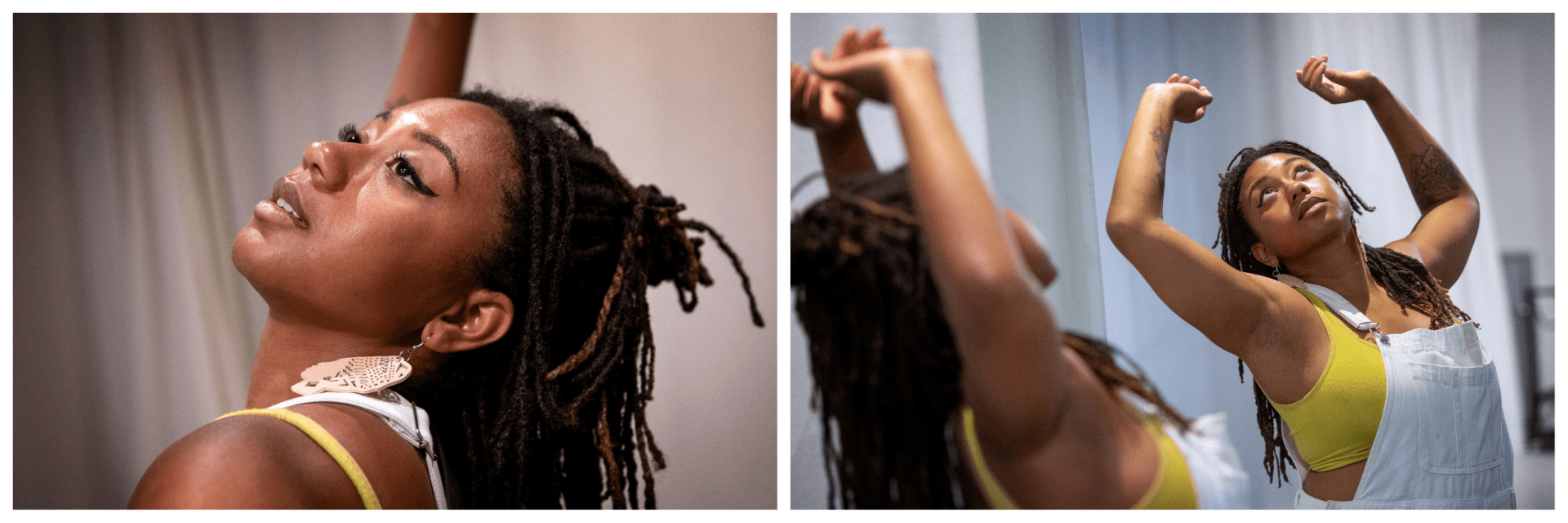
Awkward says water inspires her. When she’s stuck, it doesn’t matter what time of year it is — she goes for a swim. “It calms me, reminding me that I'm a part of this world and humans are a part of nature. We're not separated from it.”
The 26-year-old is originally from Natick and started dancing when she was 13 years old. “I feel like I’ve been dancing for a long time, but a lot of people would say 13 is late for a dancer to start.” She graduated in 2018 from Goucher College in Maryland, and moved to Boston where she has since generated many opportunities for herself and her collaborators.
One of her goals for her company, VLA DANCE , is to pay her dancers a competitive wage. The company also provides transparent details about its finances to promote equity and keep the arts scene thriving in Boston.
“It's both to inspire other artists to do the same thing, but also to keep pushing against government agencies and private funders and corporations to use their funds to create communities where people actually want to live,” she says. “Without art, no one wants to live in that kind of space.”
VLA DANCE’s transparency project is one more prong to Awkward's art and activism. It’s all about realizing that despite our different backgrounds and experiences, we all share the same earth, she says, and it’s time for everyone to become more present with that fact and let it inform how they show up with one another.
Yvette Modestin
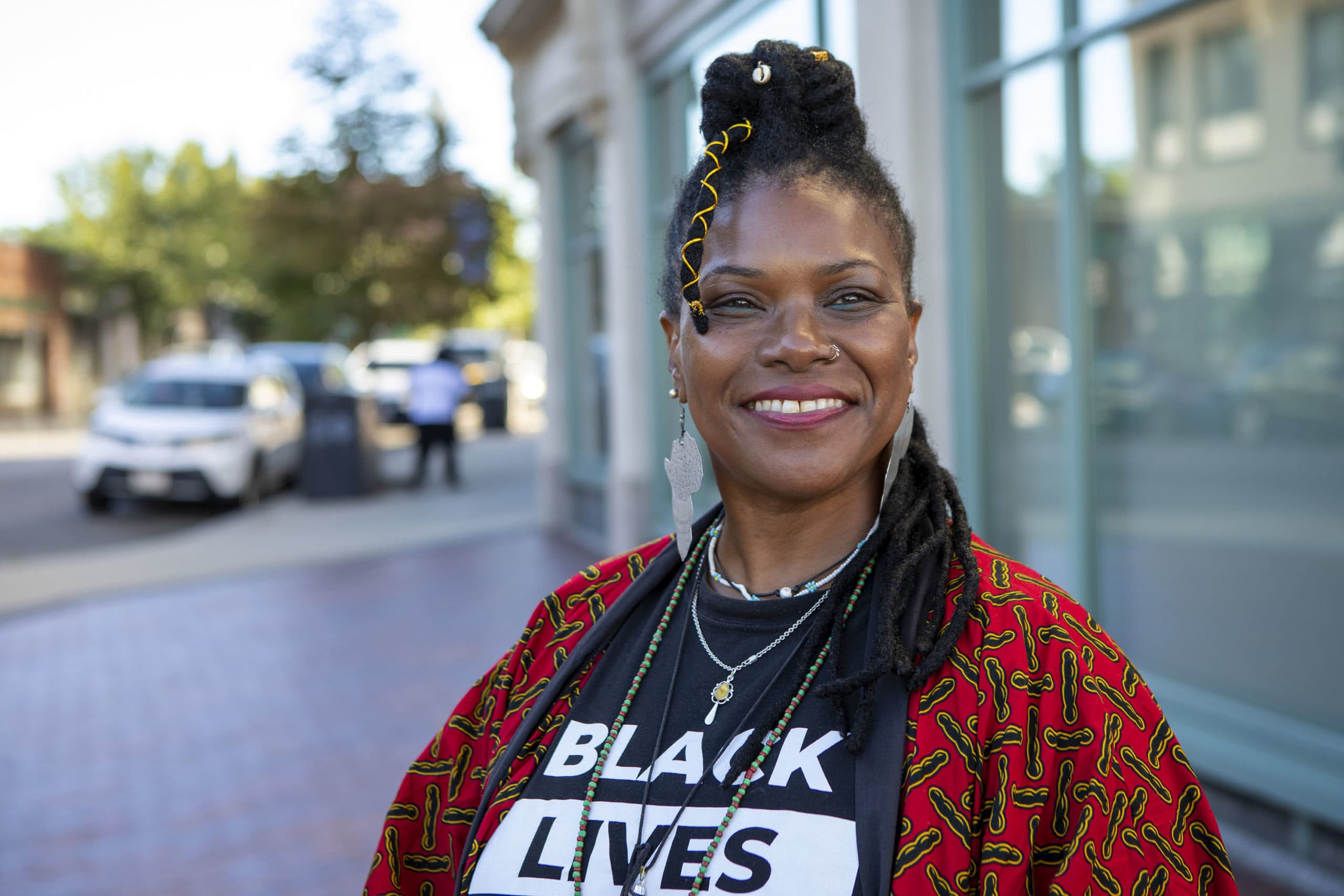
A few years ago, Yvette Modestin lead a workshop for a group of girls, mostly of Dominican descent. She went down the line, gently asking each one how they identify. Some would say, “Latina” or refer to their family’s homeland. Very few uttered the word “Black.” When they did, a couple started to cry. They were taught to believe the color of their skin was something to erase or be ashamed of. Modestin was there to name this internalized racism and begin the process of undoing it.
It’s this type of anti-racist training that is at the heart of Modestin’s work and her organization, Encuentro Diaspora Afro. She’s a Boston-based artist on a mission to help the world understand the African diaspora.
“This is all about reparations and reparative justice,” she says. “My love for my blackness, I want people to feel it. I want people to see it. I want people to hear it.”
Modestin wants to repair and deconstruct this denial of Blackness, specifically in Latin America. She grew up in Colón, Panama — a city that was segregated during the first eight years of her life. It remains predominantly Black.
“I think it was a blessing in the sense because it centered me in my Blackness,” she says. “I also had daily visuals of a Black doctor, a Black nurse, my own mother, a Black police officer, a Black firefighter… So I walked around daily with people that look like me. I didn't have to explain myself.”
Or her locs, which she wears proudly. She produced a multimedia experience with other local artists called “The Hair Story Project,” where they highlighted this debate over natural hair. Hair is sacred to Modestin, which she writes about in her poem “An Ode to mi Corona.”
“From the Platt to the Cornrows to the Afro to the locks. You have stayed with me, reminding me of an unconditional joy and love of our Blackness.
...Call it your crown, La Corona. Your antenna for the message of the ancestors sits deep within waiting for you to say I am here. Estoy aquí free. Libre.”
Modestin works around the world with the U.N. Office for Women and the African Union. Locally, she works with organizations including Company One Theatre, the Museum of Fine Arts Boston, the Museum of Science and the nonprofit Girls Inc. She paints and has written books and worked on a documentary about the Black history of her nation.
In the documentary, titled “ Cimarronaje en Panamá ,” researchers noted that fugitives from slavery were called "cimarrones," from the Taino term for “flight of an arrow.” The film shows how these formerly enslaved people would maintain customs and align themselves with others from their homelands.
“I want people to realize that we were dropped off everywhere,” she says. “The uncle was dropped off in Panama, the tía was dropped off in Martinique, the other one was dropped off in Peru, the other one was dropped off in Ecuador. So I start my day by seeing every Black person as a possible family member.”
Photographer OJ Slaughter captured the group image of The Makers, with assistance from J R Alexander . Alberto Montalvo filmed the video for the series.
This article was originally published on September 19, 2022.

